The document summarizes the European Commission's position and activities regarding open access to scientific publications and research data. The Commission promotes open access as it benefits scientific progress, innovation, and taxpayers. It has implemented open access policies for EU-funded research projects and provides support for open access infrastructure and member state initiatives. Stakeholder consultations help inform the Commission's ongoing work and future policy agenda on further developing open access across Europe.
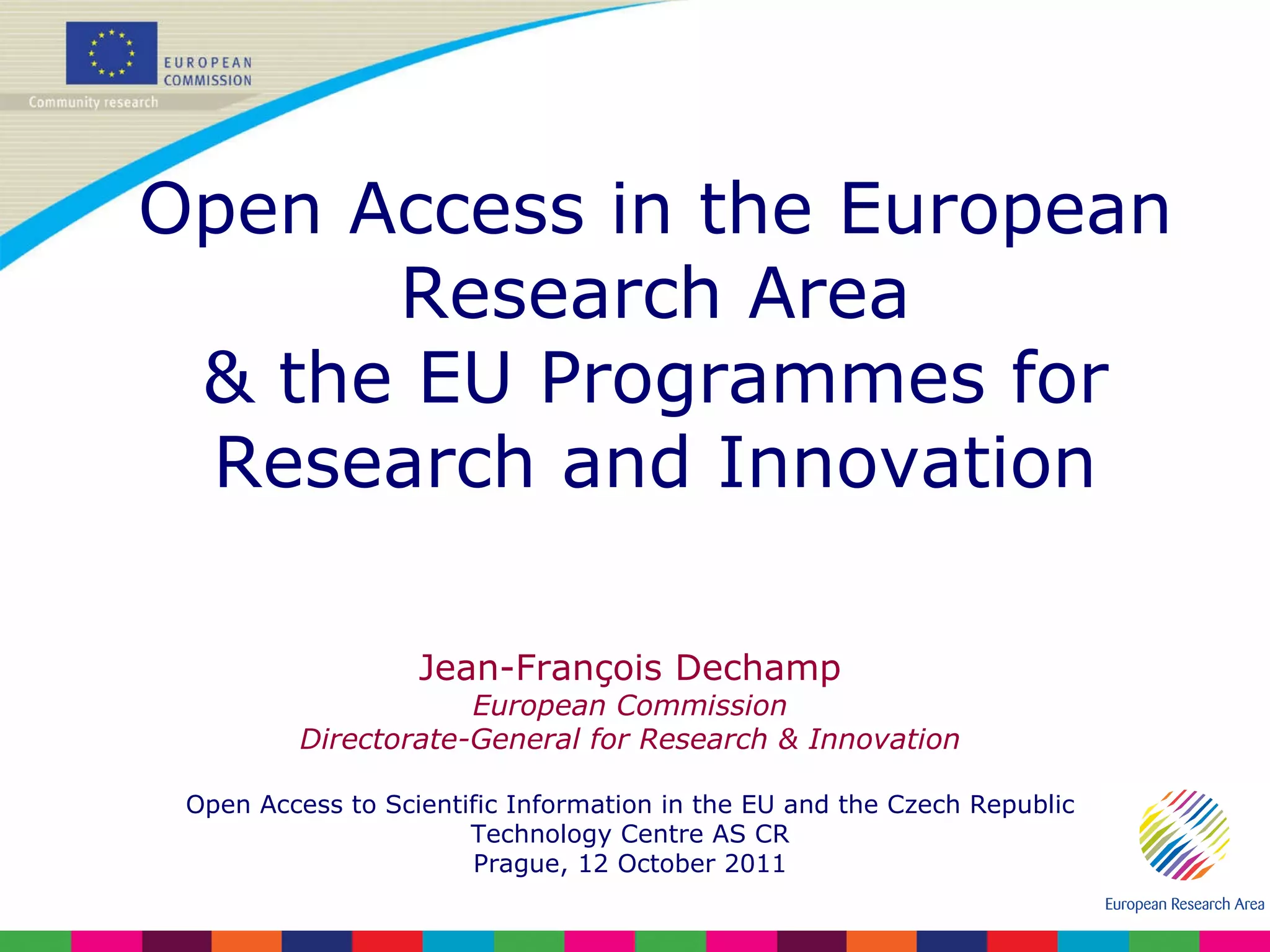
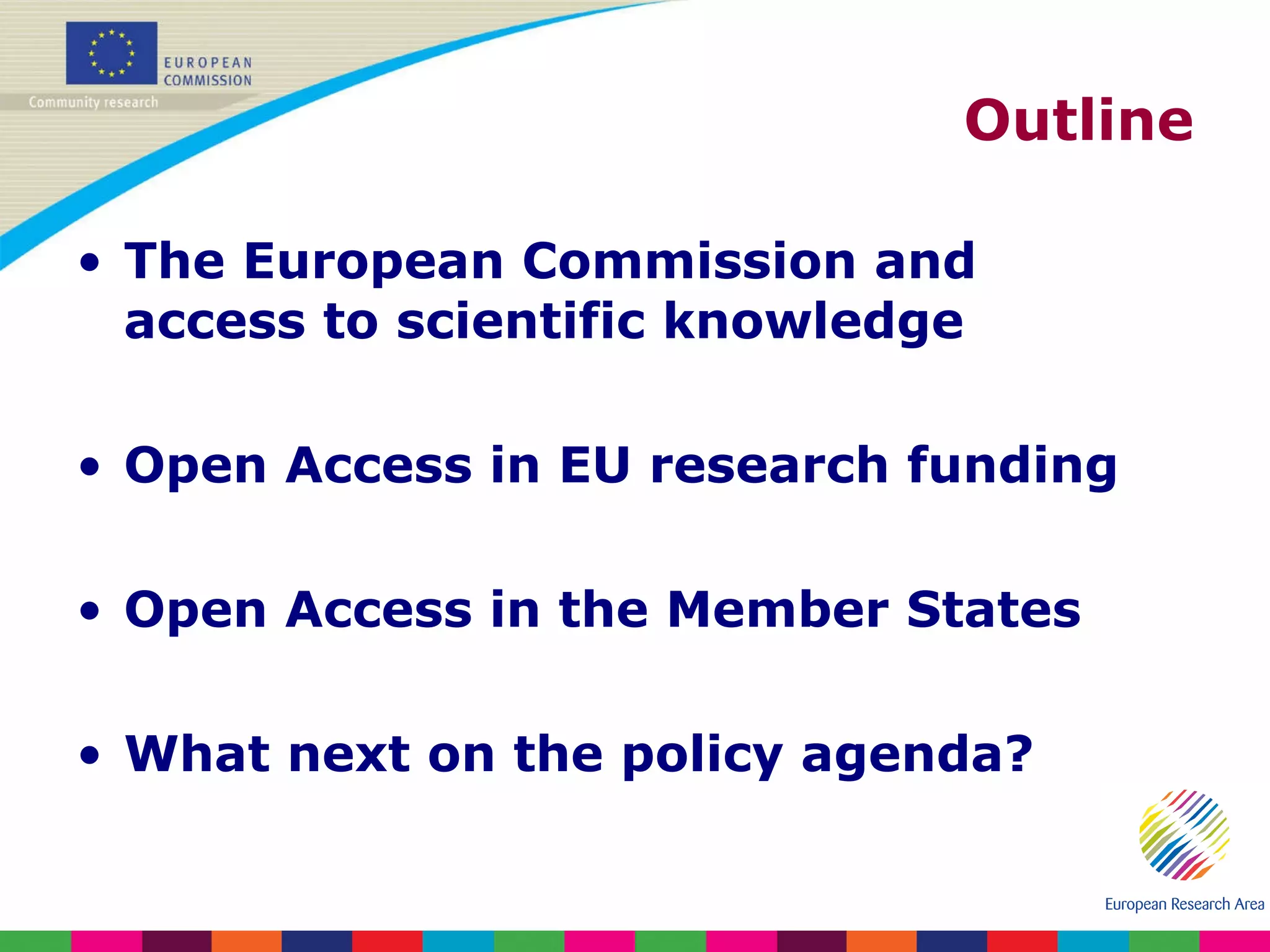
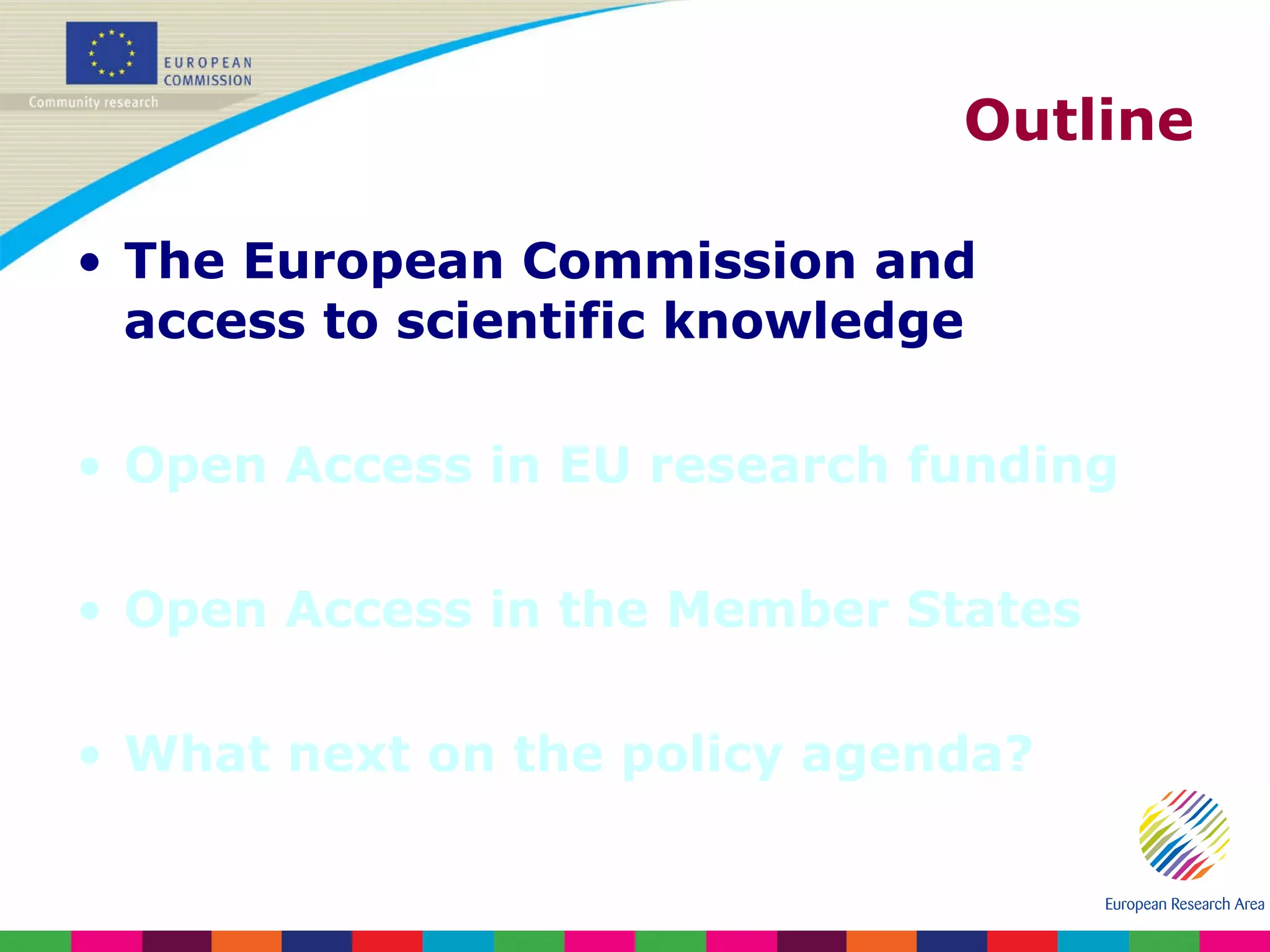
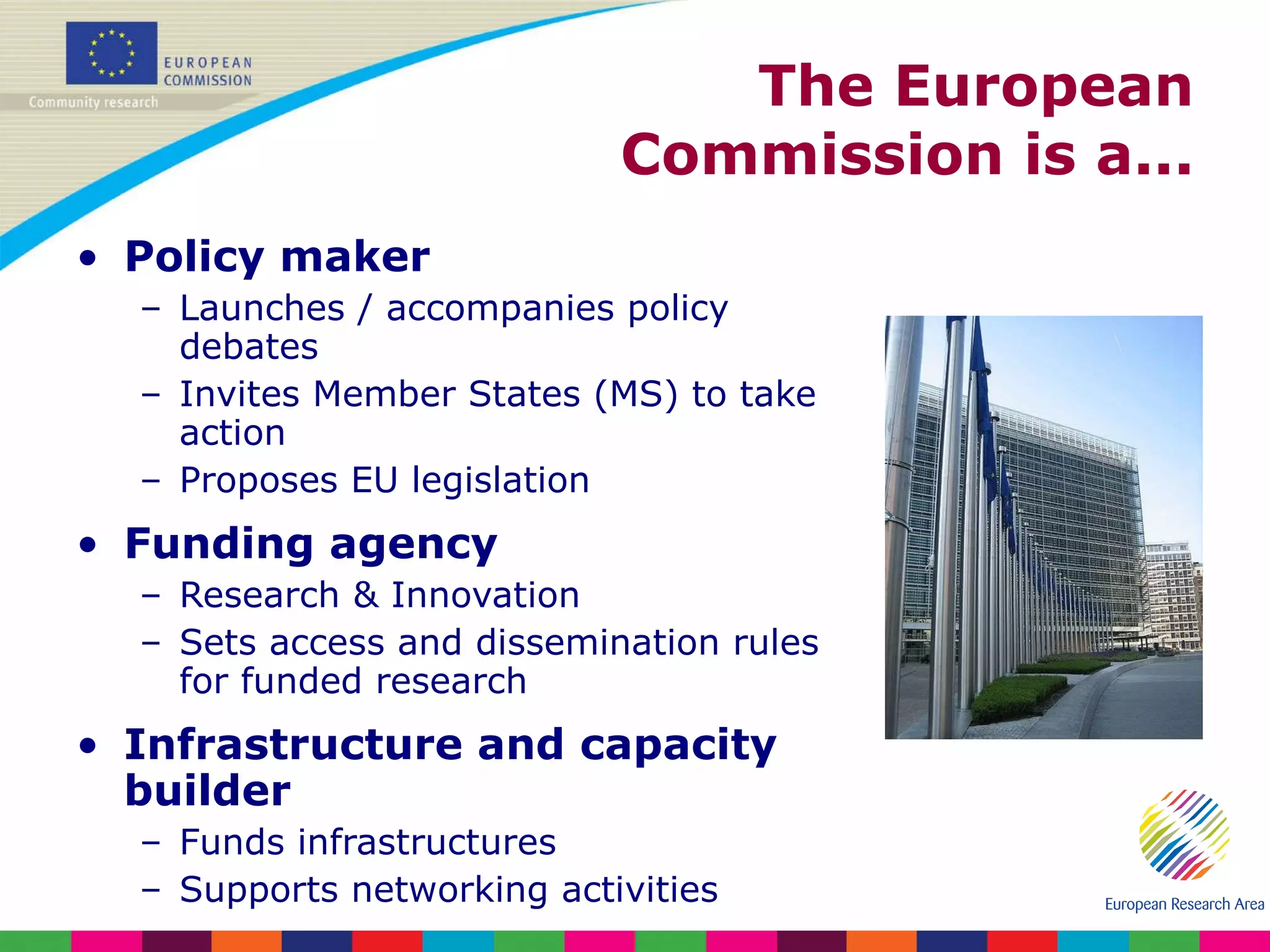
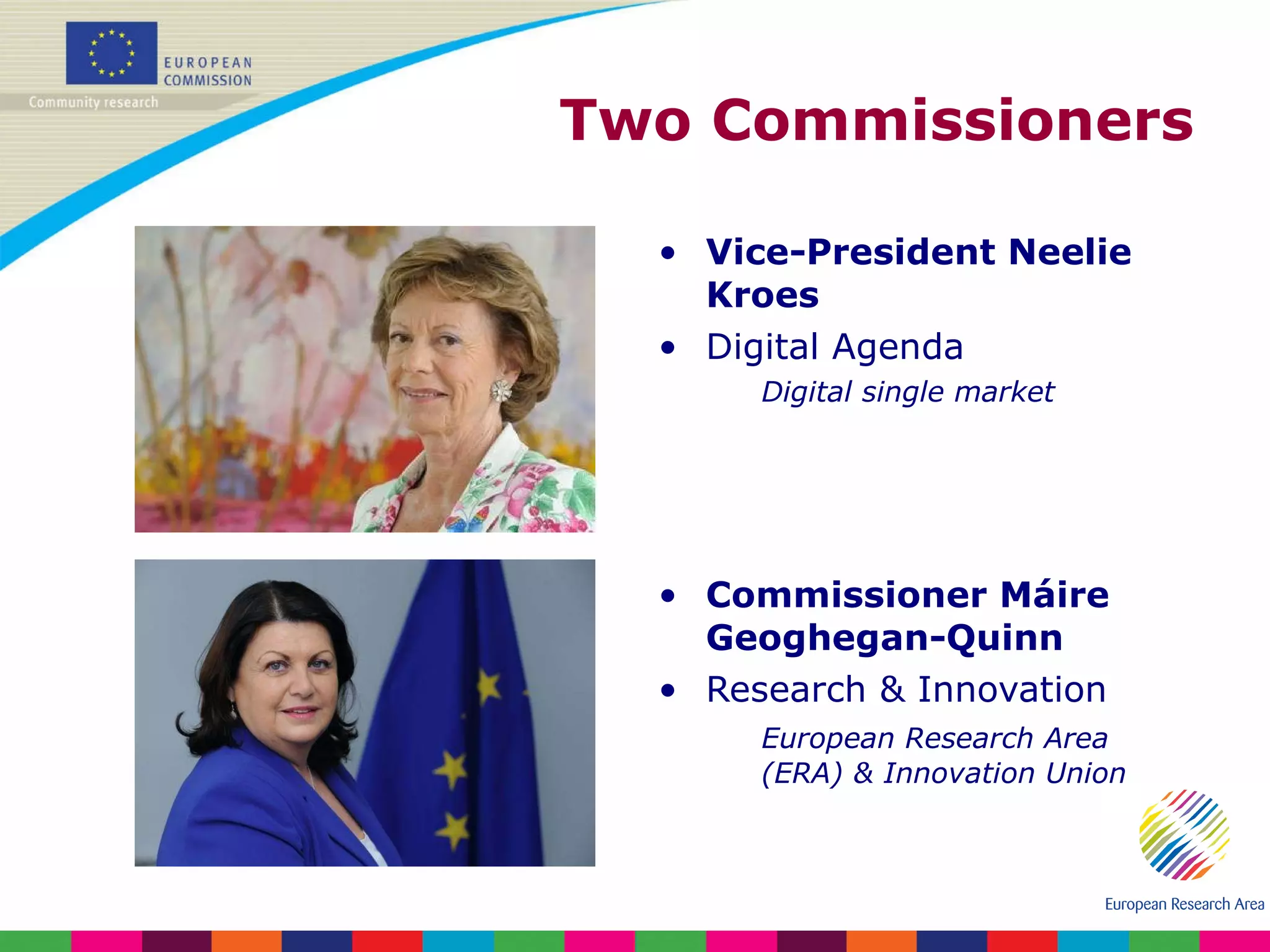
![Digital Agenda Communication from the Commission ‘ A Digital Agenda for Europe ’ Speed up the roll-out of high-speed internet and reach the benefits of a digital single market Driving ICT innovation by exploiting the single market: “ […] publicly funded research should be widely disseminated through open access publication of scientific data and papers”; “ […] the Commission will appropriately extend current open access publication requirements […]”.](https://image.slidesharecdn.com/2011-10-12-oainczjfdrev-111104044912-phpapp02/75/Open-Access-in-the-ERA-and-FP7-6-2048.jpg)
![Innovation Union Communication from the Commission ‘ Innovation Union ’ Improve conditions & access for research and innovation Delivering the ERA: “ [...] The Commission will propose a European Research Area framework [and] seek to ensure […] dissemination, transfer and use of research results, including through open access to publications and data from publicly funded research ” Promoting openness: “ The Commission will promote open access to the results of publicly funded research. It will aim to make open access to publications the general principle for projects funded by the EU research Framework Programmes […]”.](https://image.slidesharecdn.com/2011-10-12-oainczjfdrev-111104044912-phpapp02/75/Open-Access-in-the-ERA-and-FP7-7-2048.jpg)

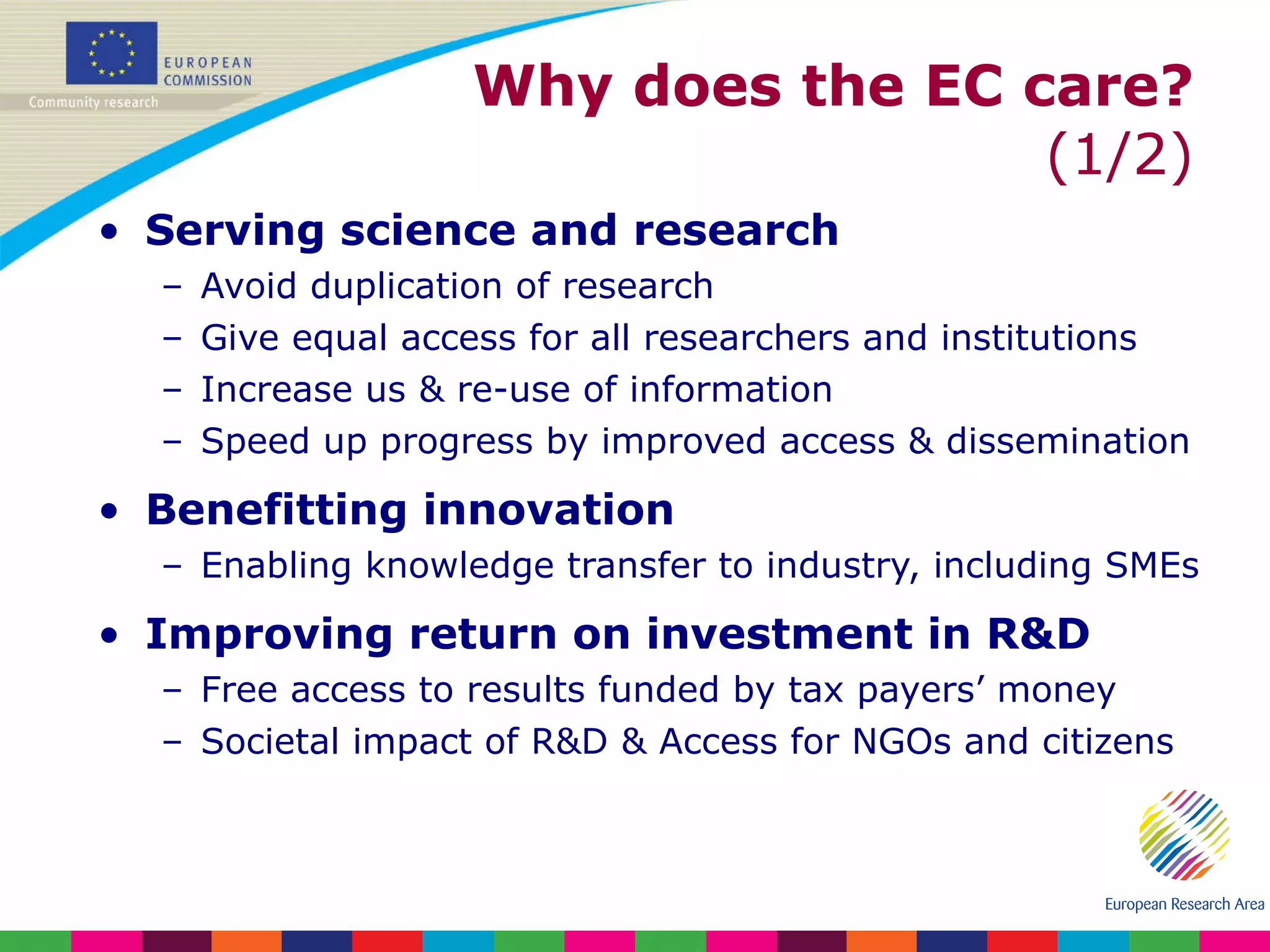


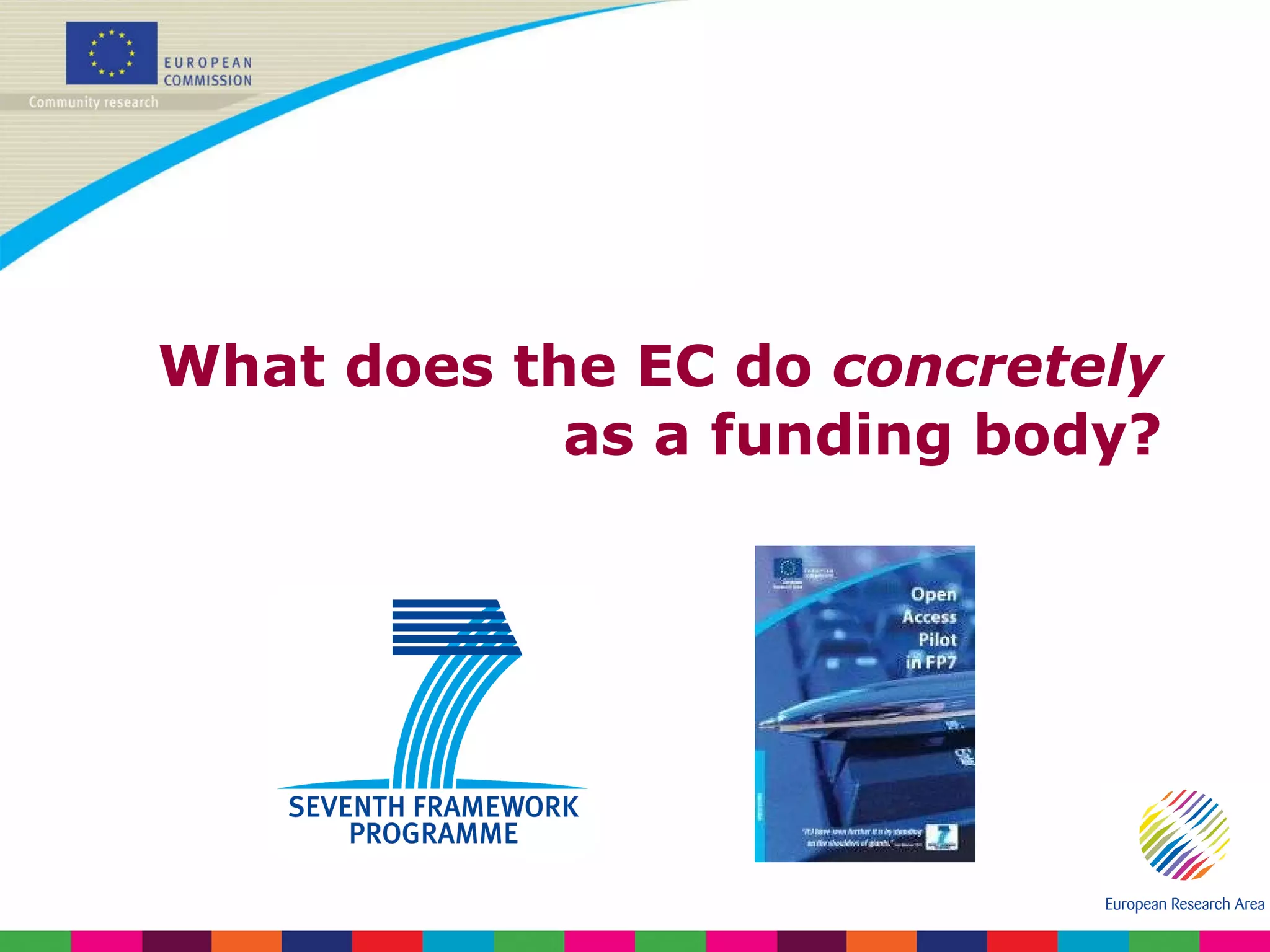

![Seven areas (20% of FP7 budget) Energy, Environment, Health, Information & Communication Technologies [only a part], Research Infrastructures [only a part], Science in Society, Socioeconomic Sciences & Humanities Embargo (6/12 months) allows scientific publishers to ensure a profit on their investment (by e.g. charging for journal subscription) Special Clause 39: FP7 grant recipients are expected to: 1. deposit peer-reviewed research articles or final manuscripts resulting from their FP7 projects into an online repository; 2. make their best effort to ensure open access to these articles within 6 months after publication (12 months for SiS and for SSH). > 850 GA to date ~2000 by end of FP7 2. OA Pilot in FP7](https://image.slidesharecdn.com/2011-10-12-oainczjfdrev-111104044912-phpapp02/75/Open-Access-in-the-ERA-and-FP7-14-2048.jpg)
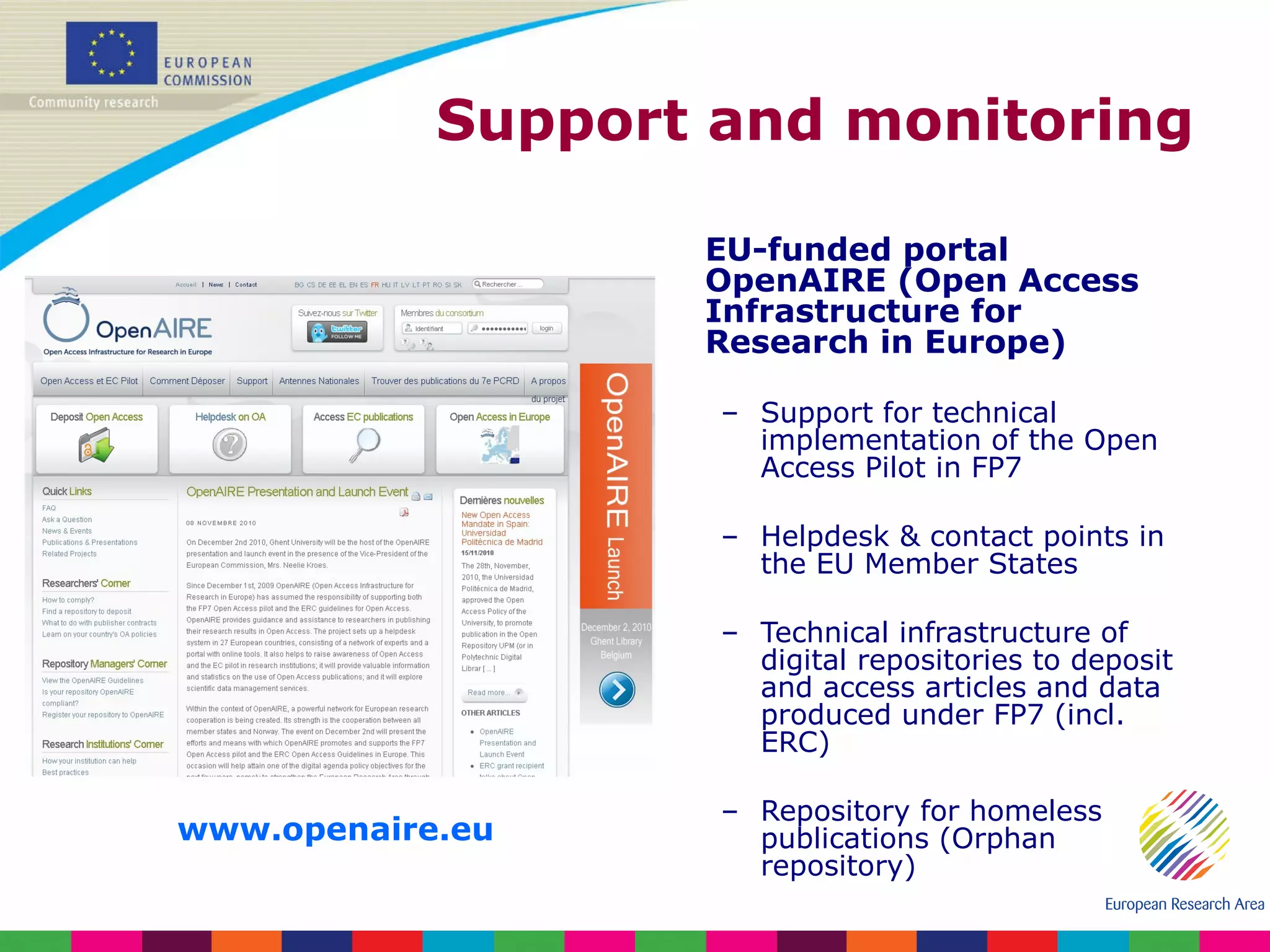
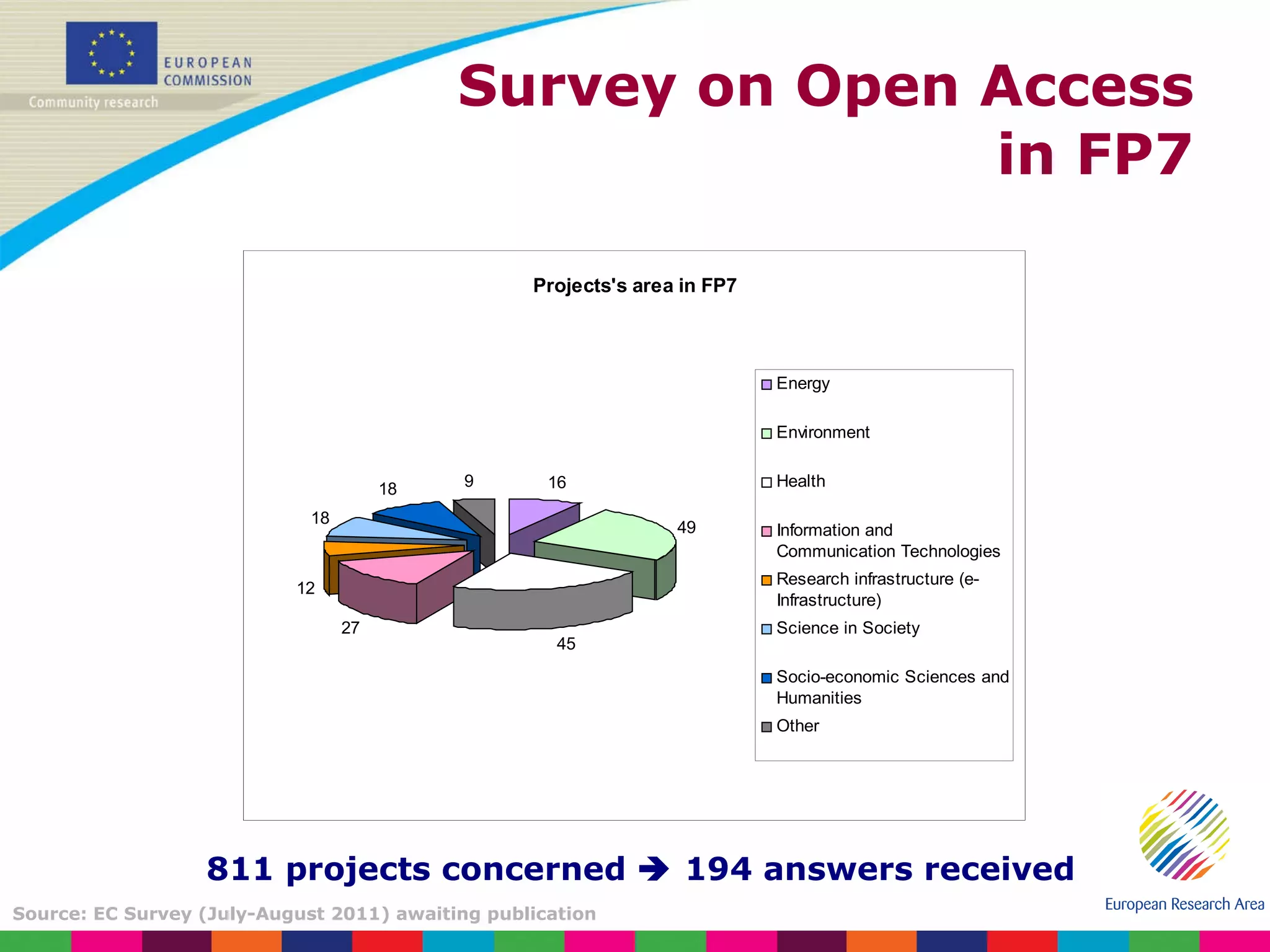
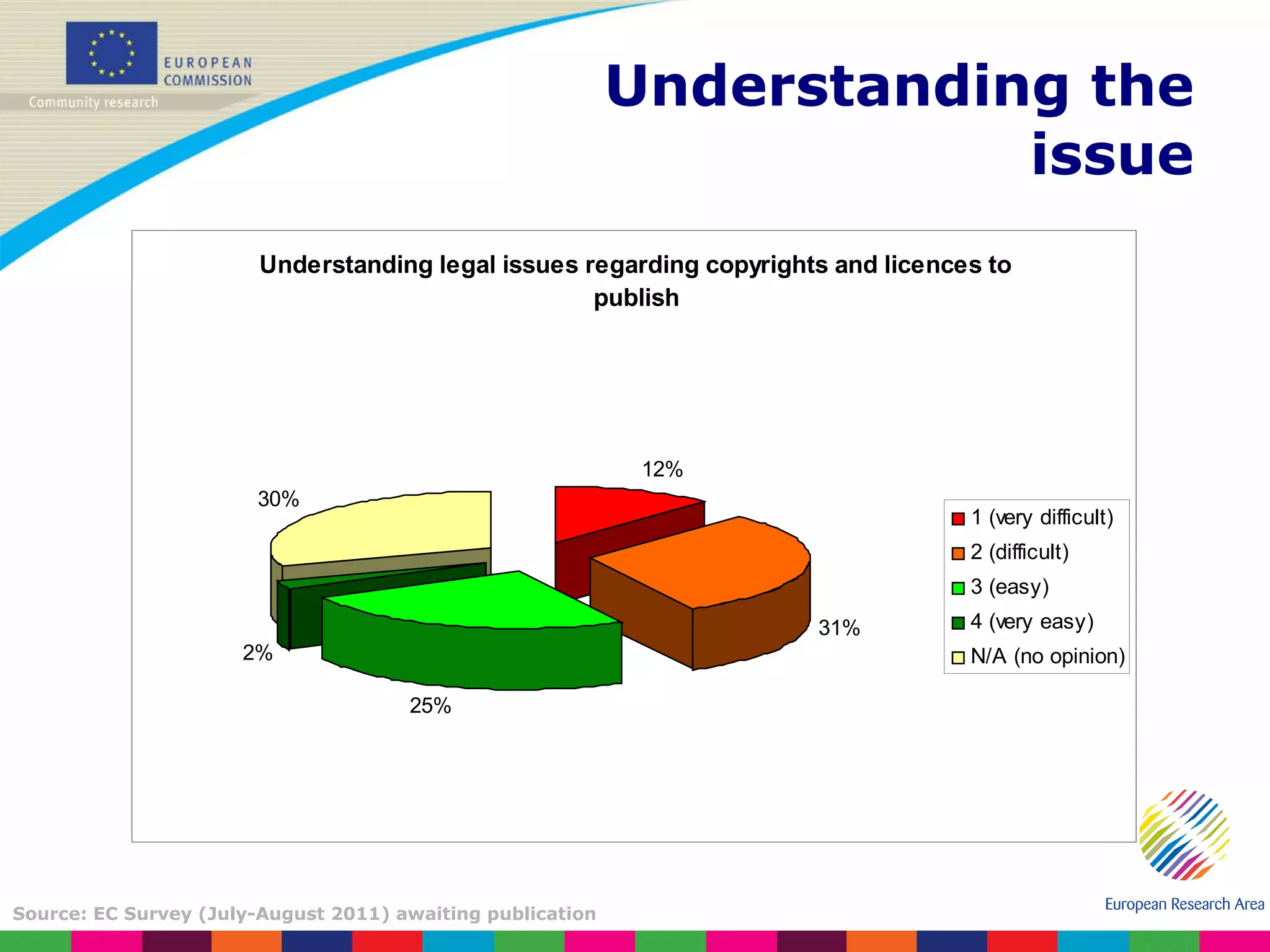
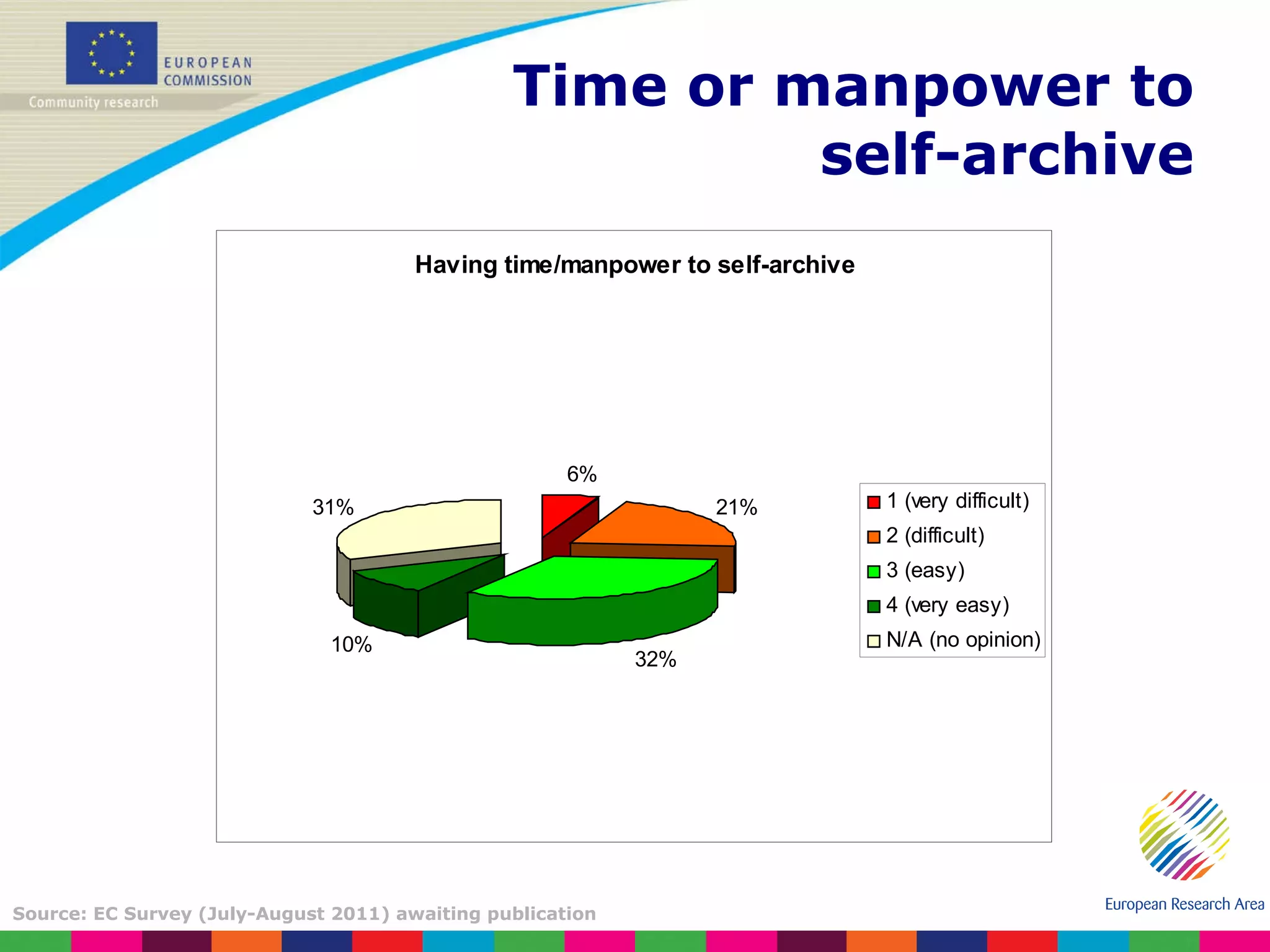
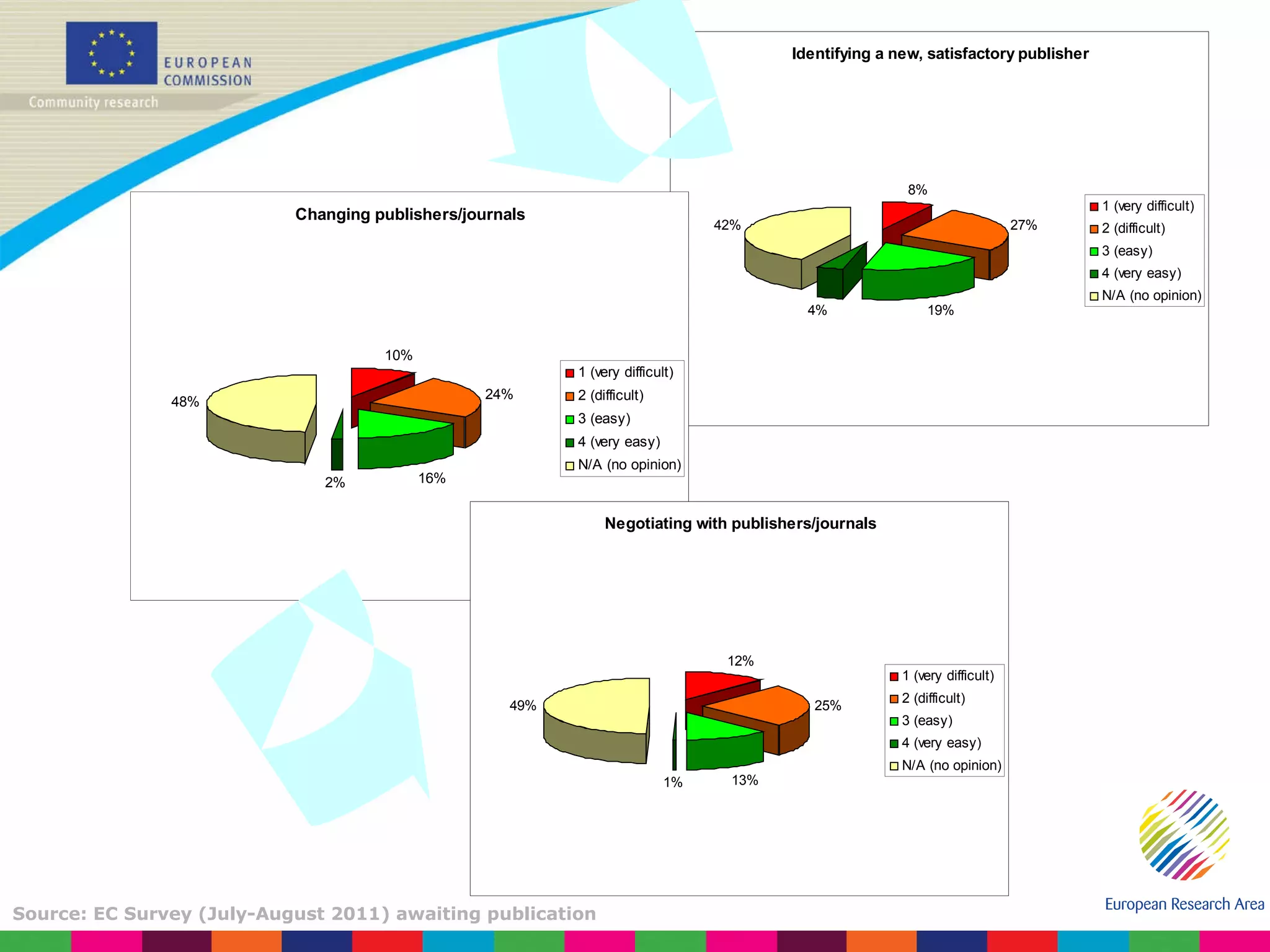
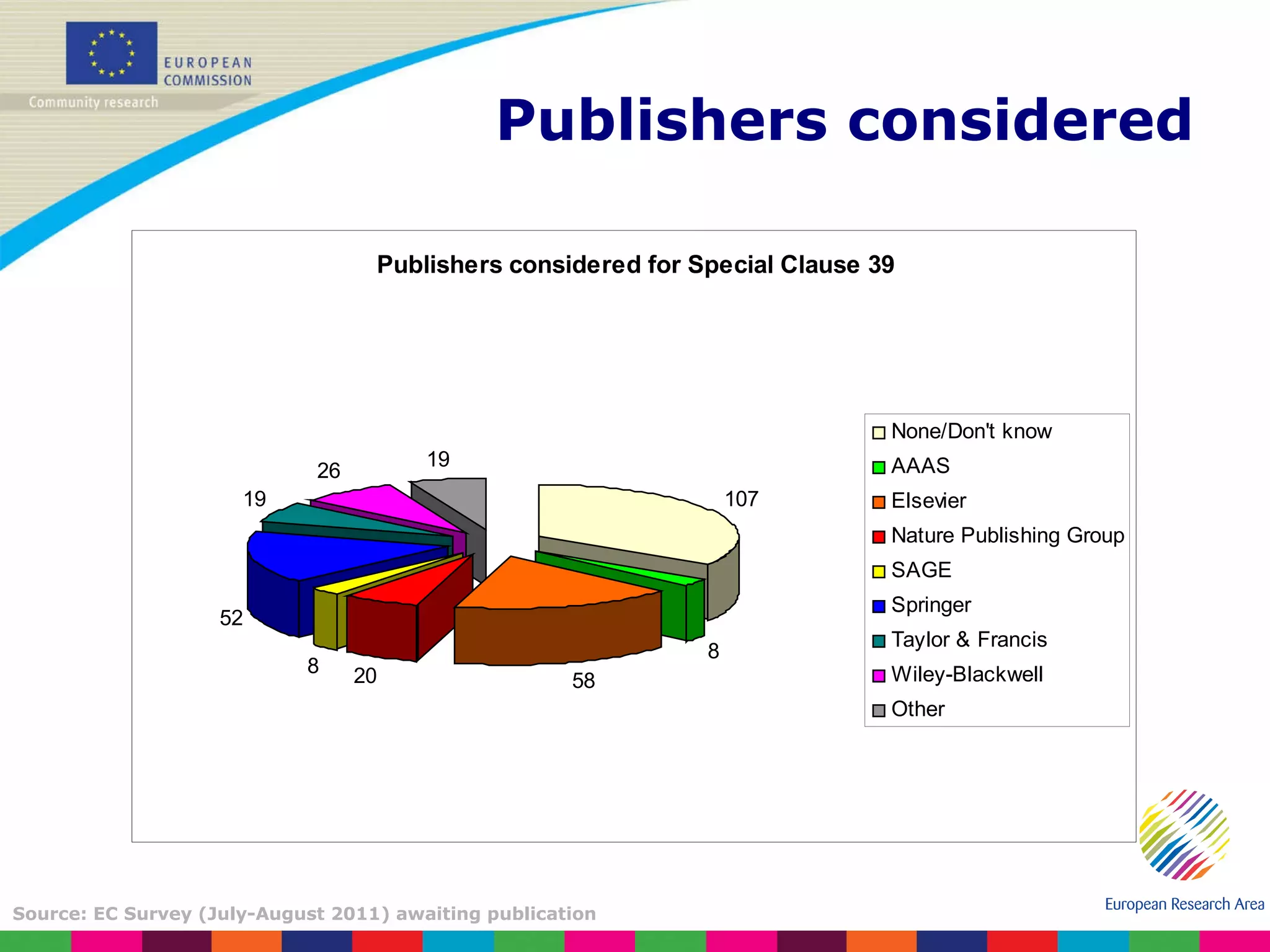
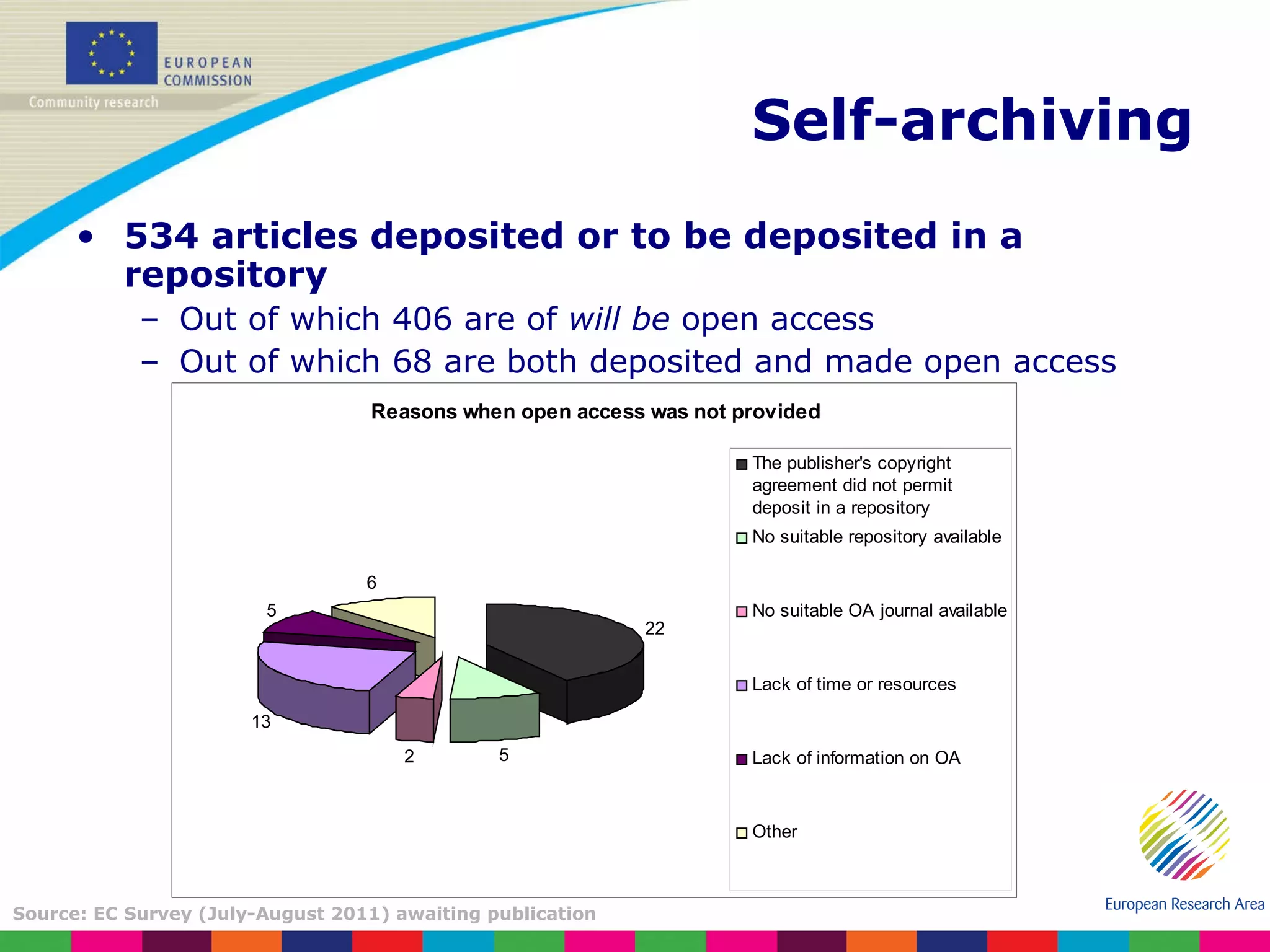
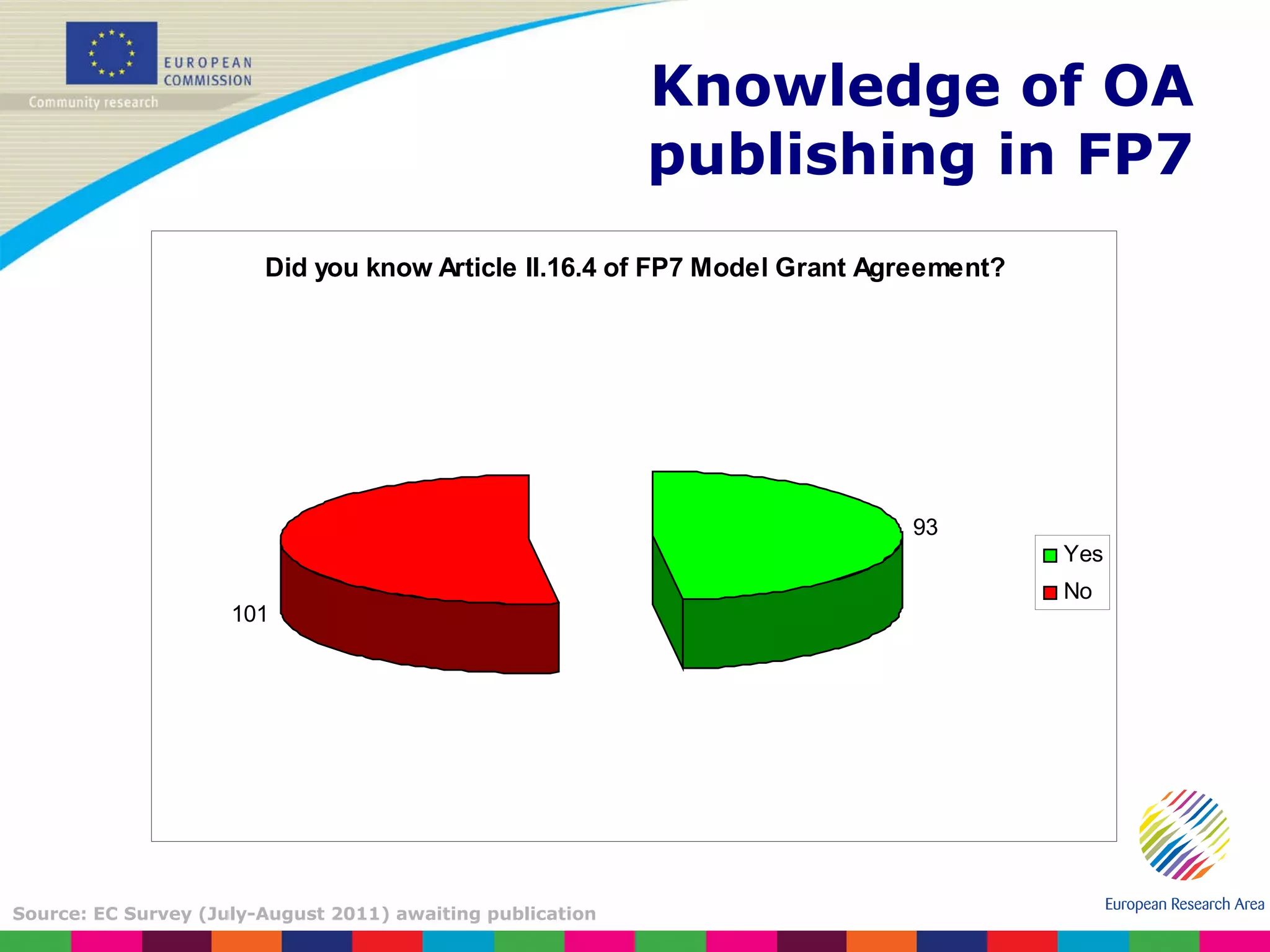
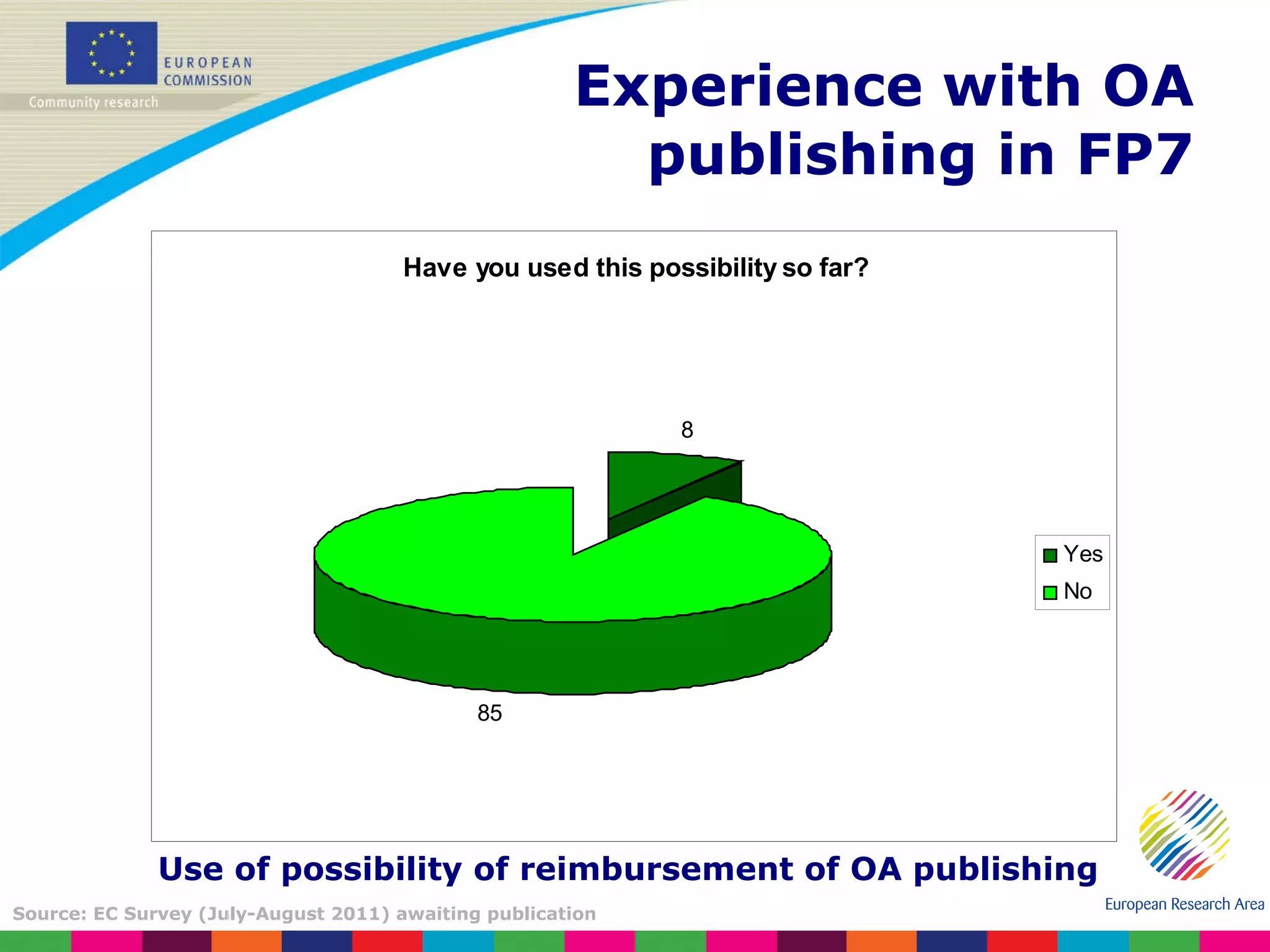
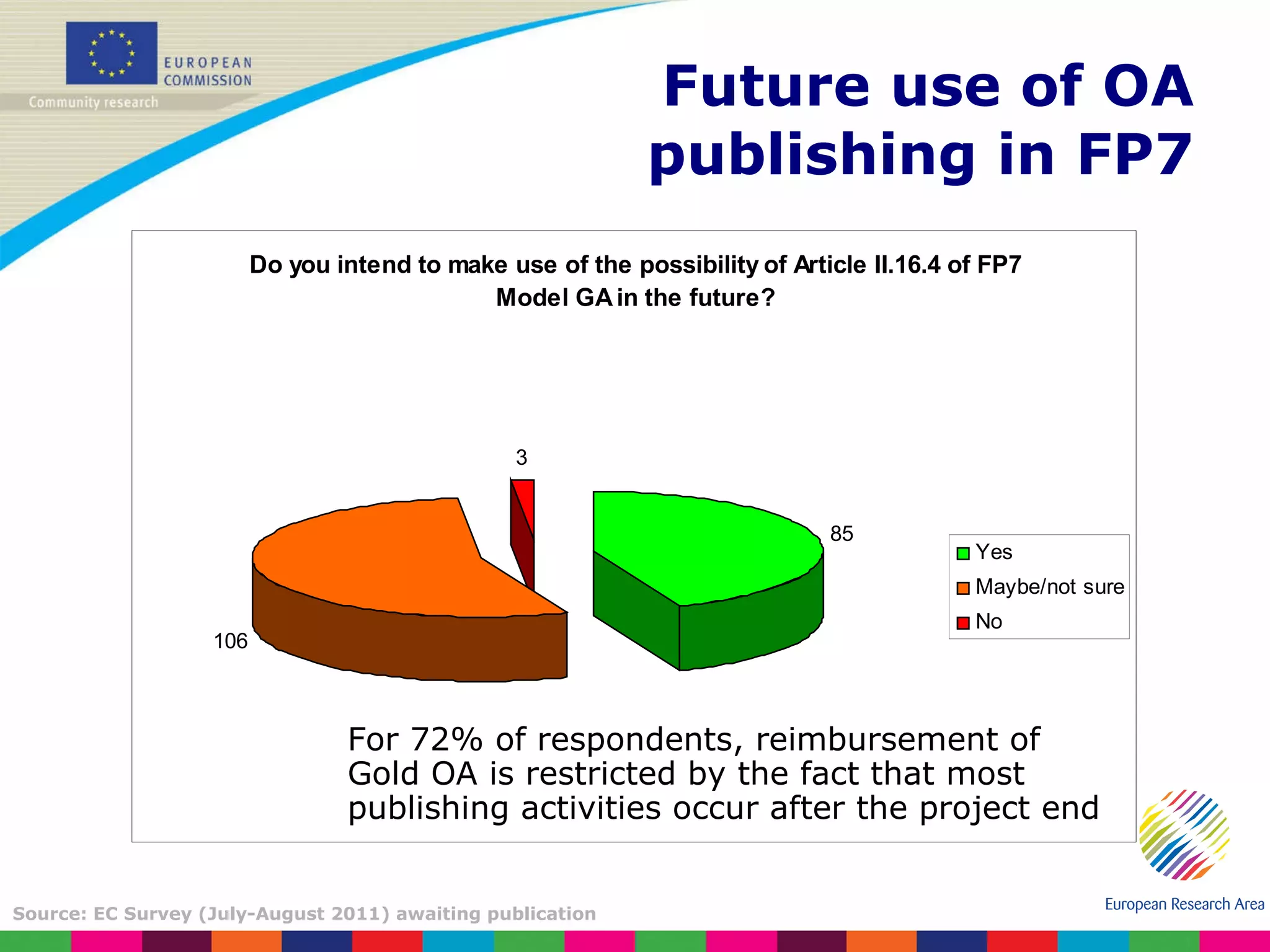
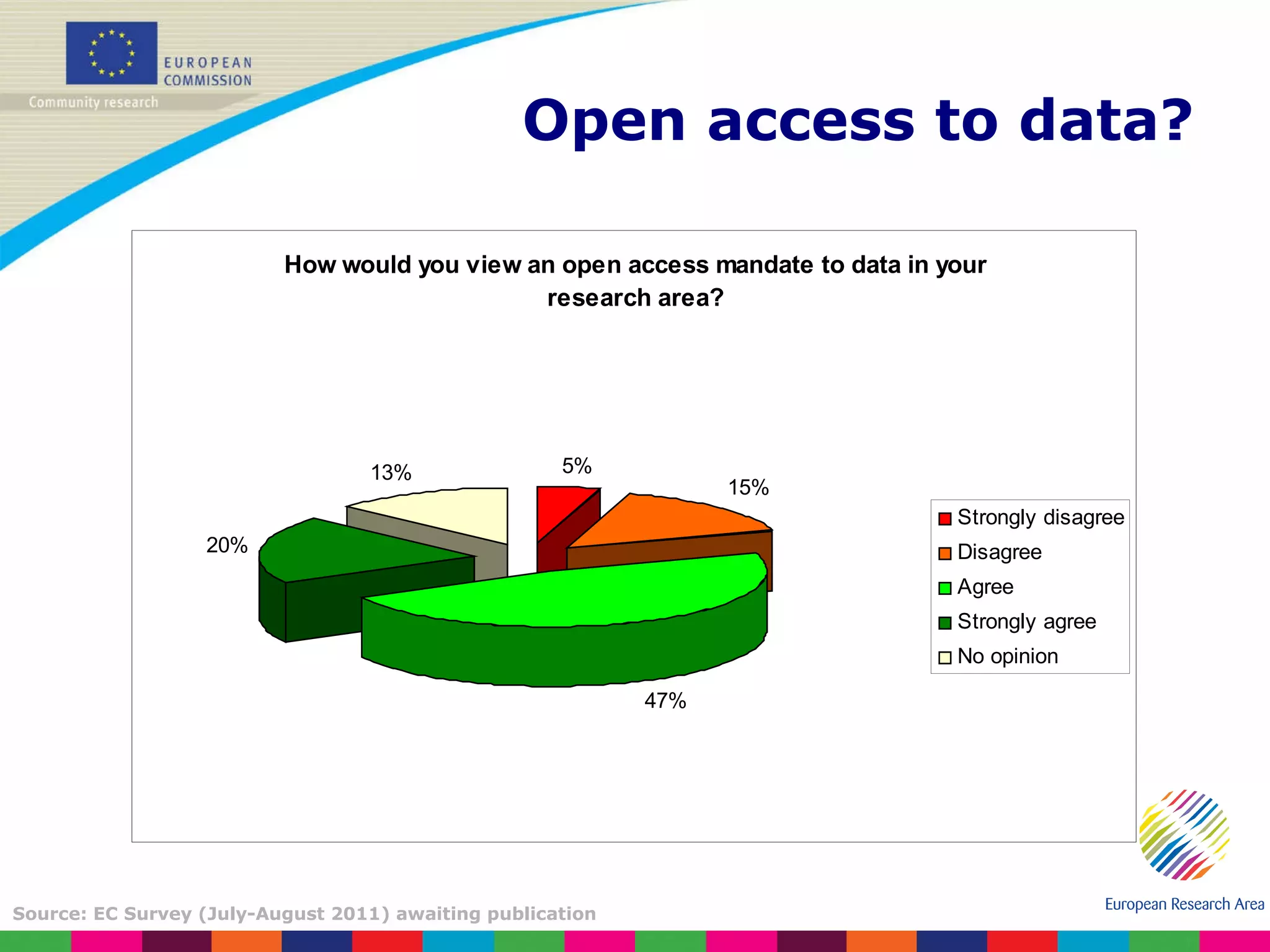
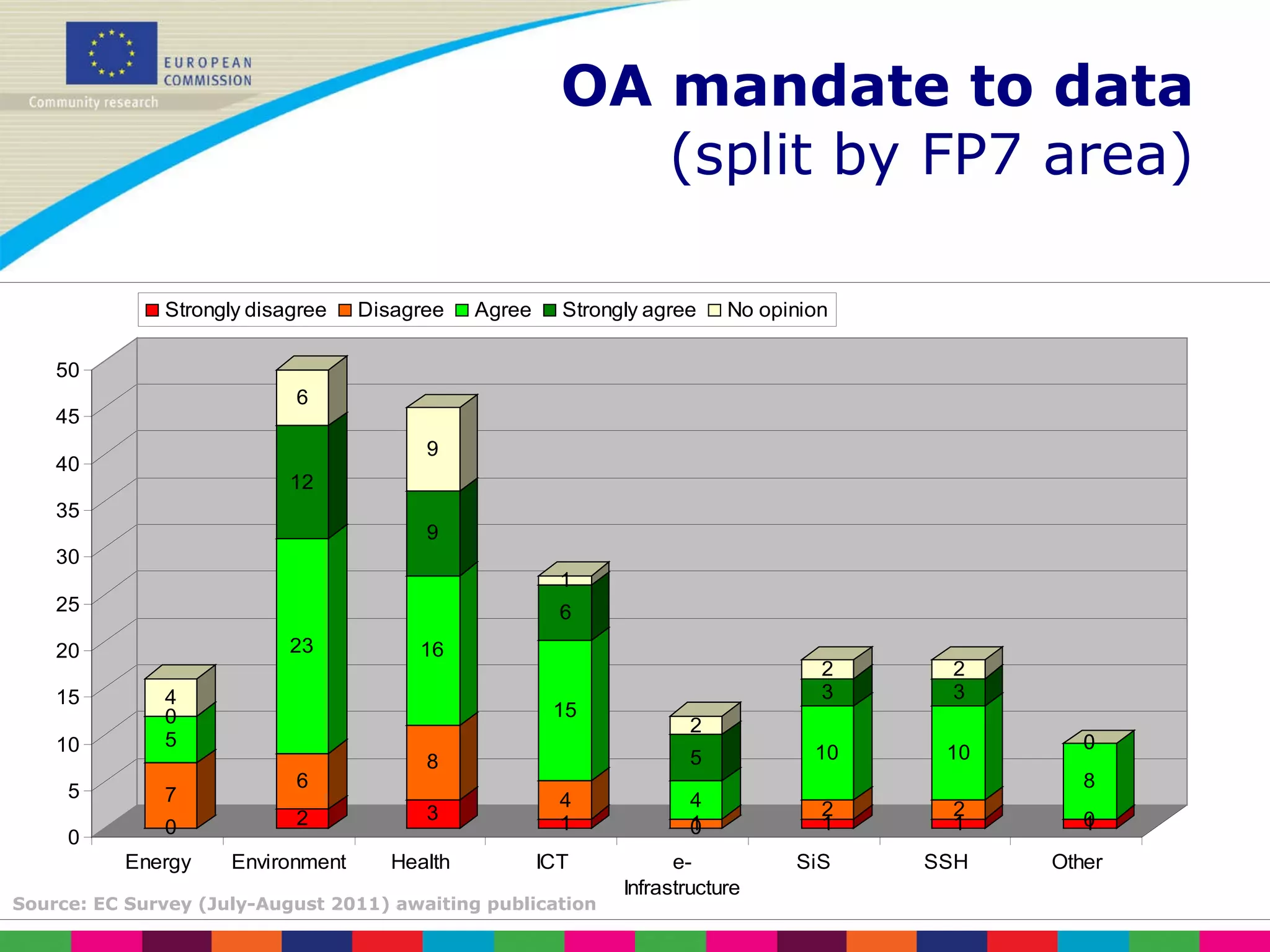
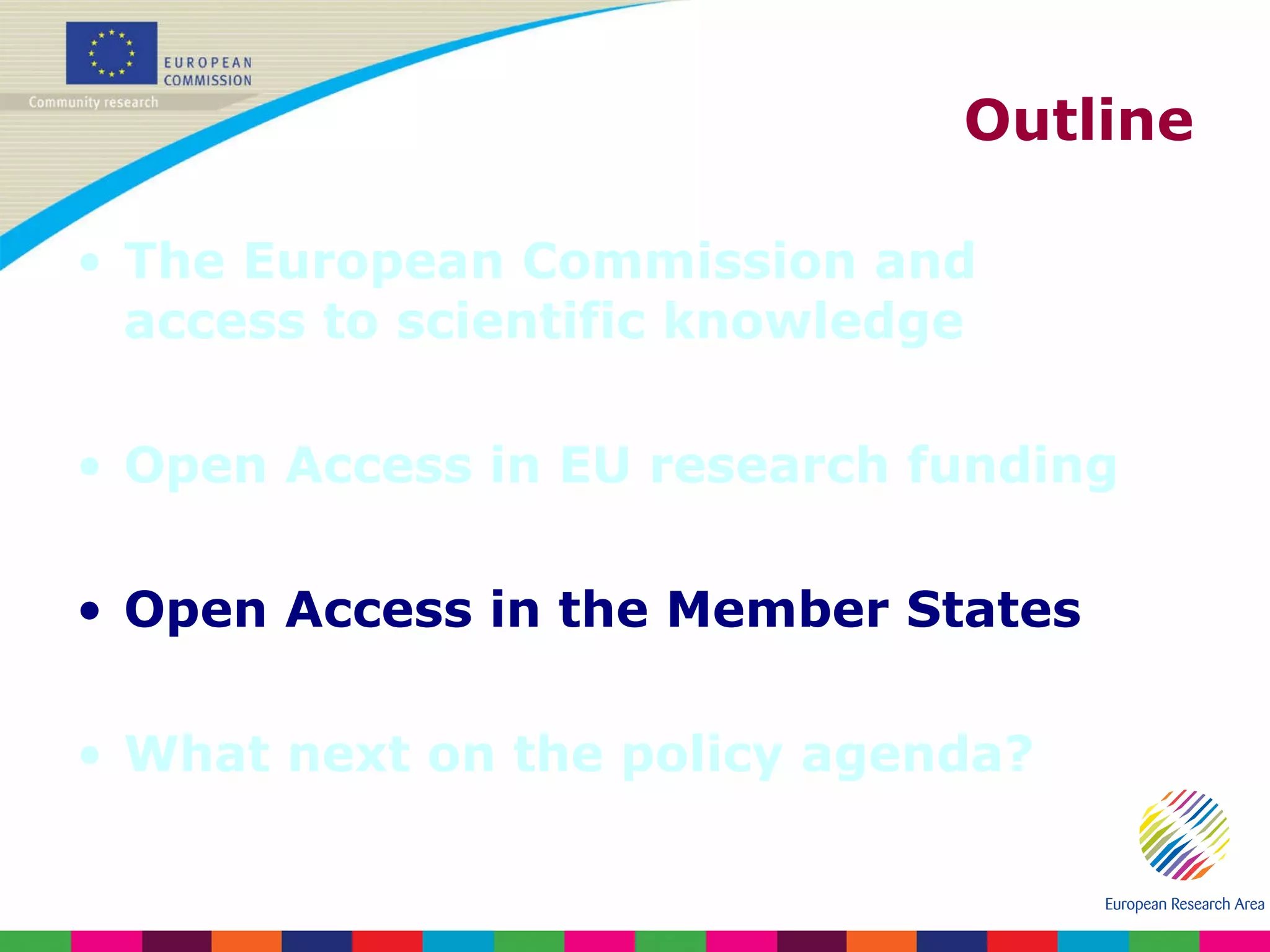
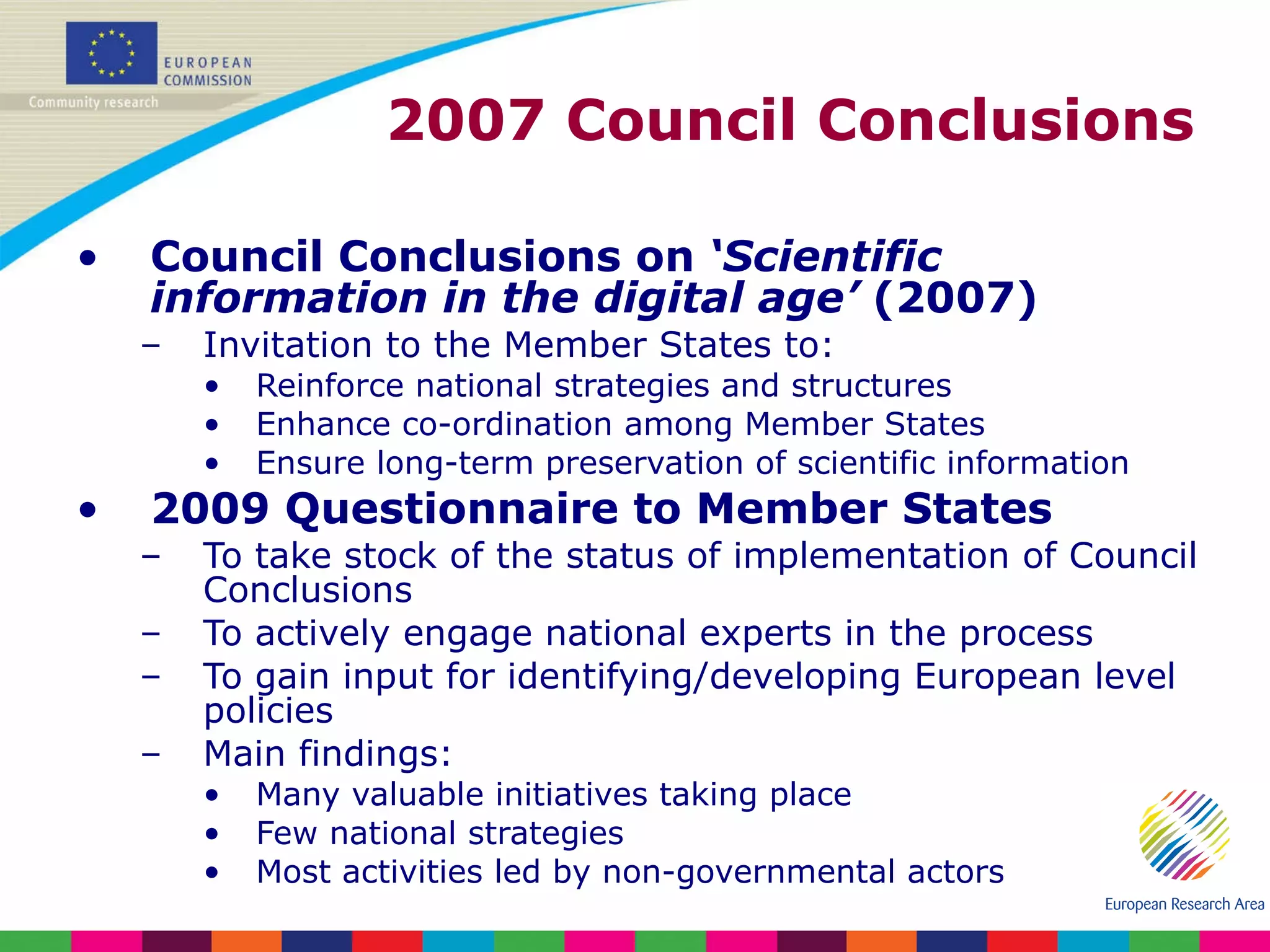
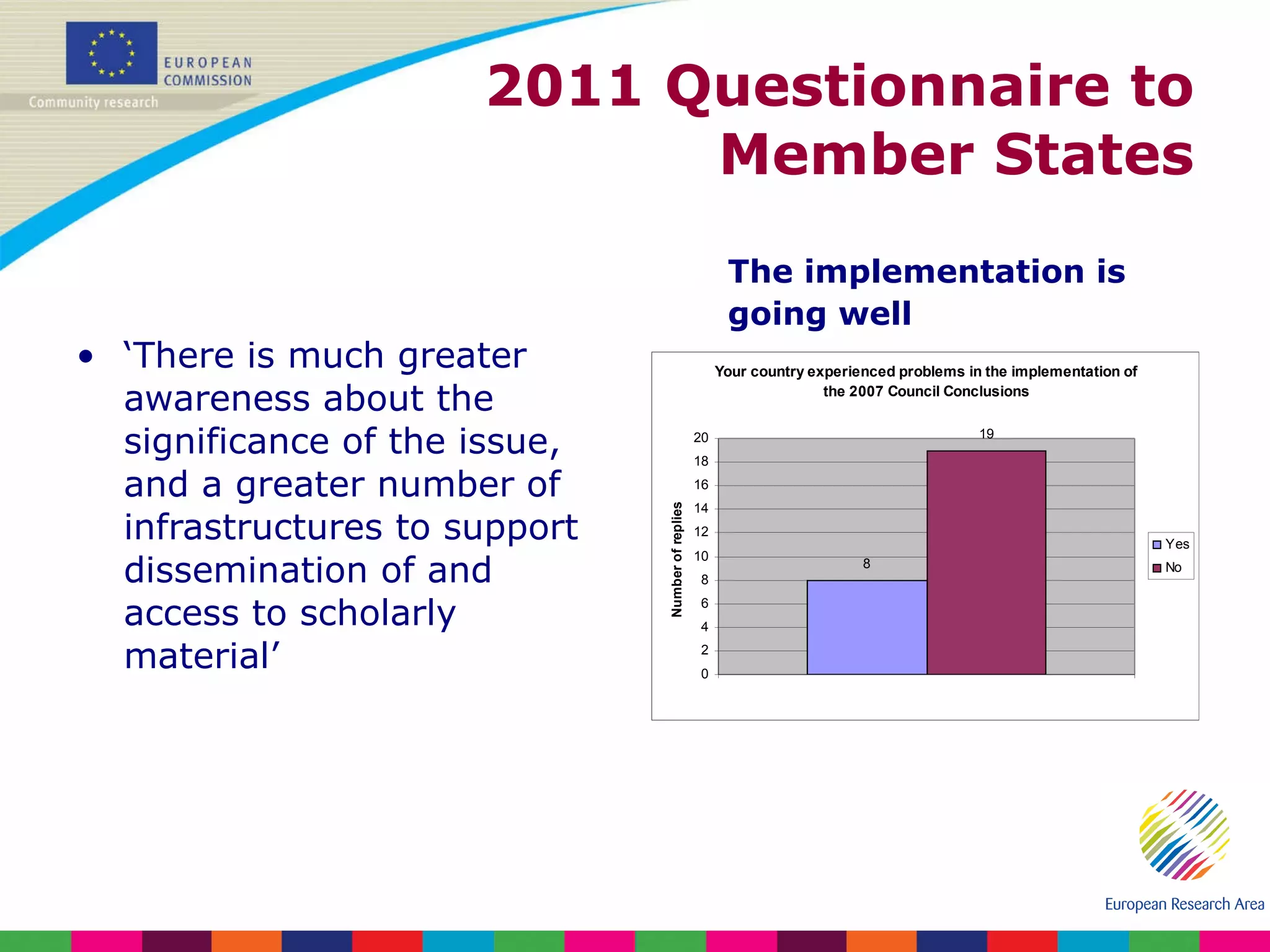
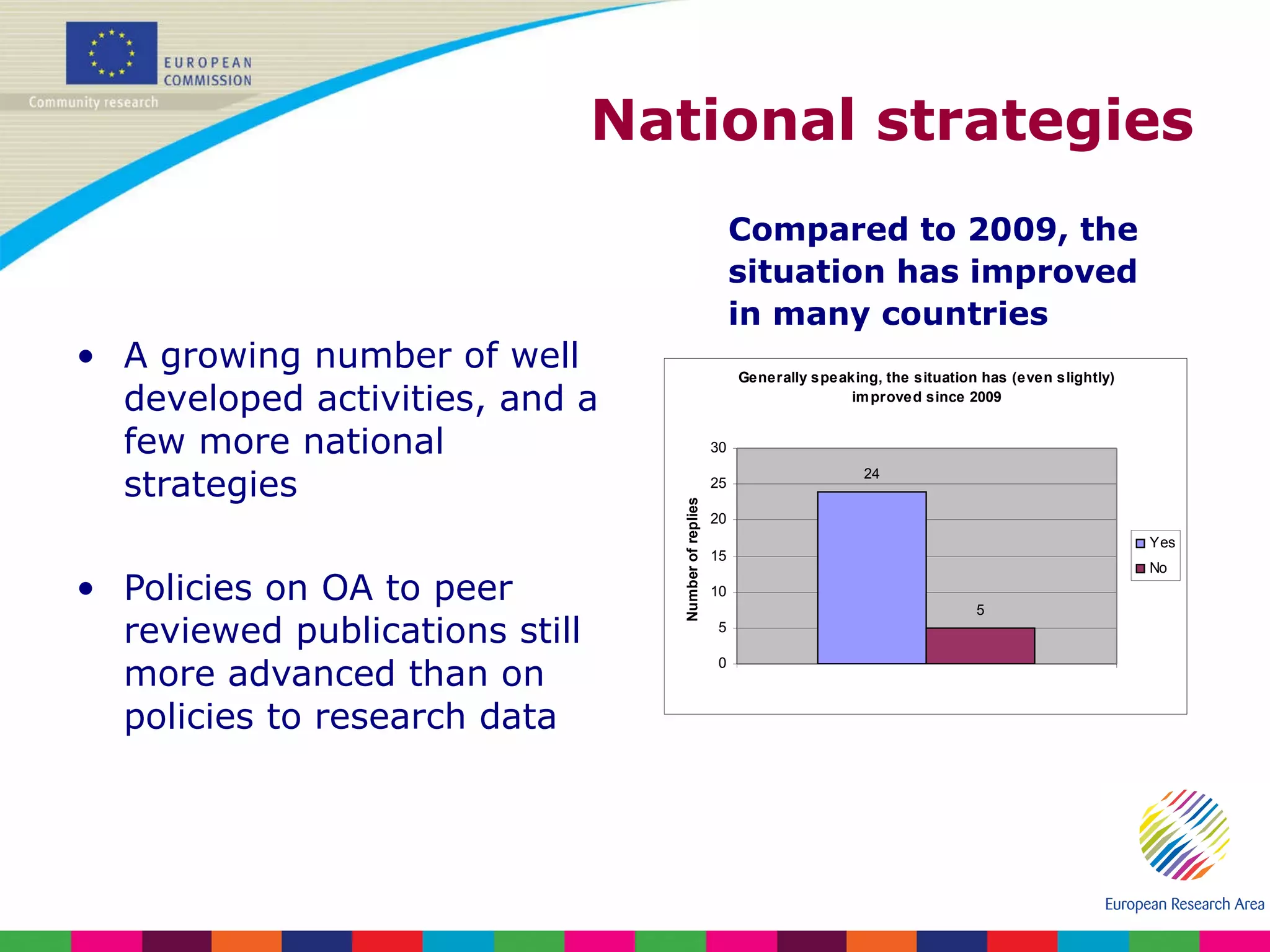
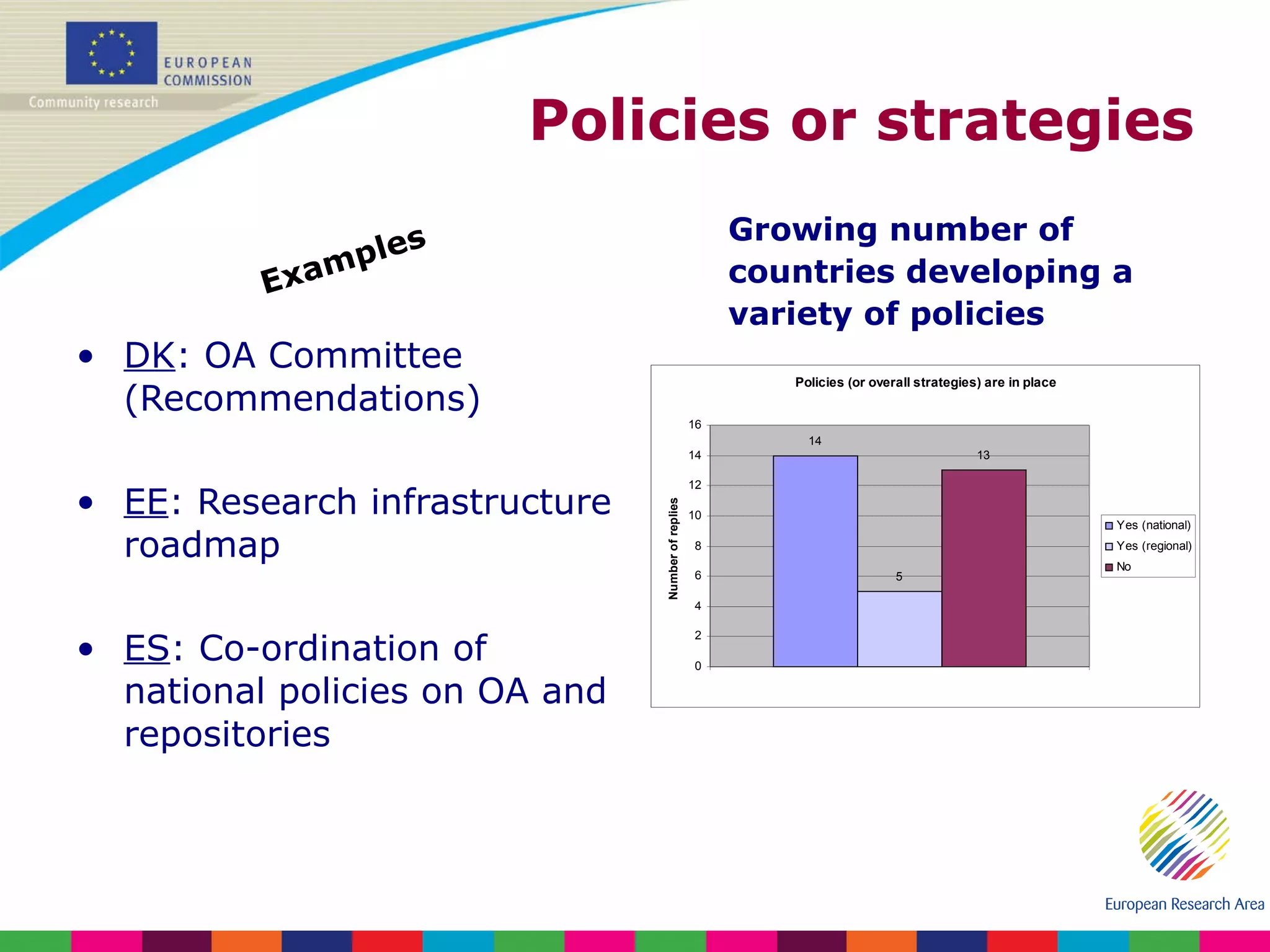
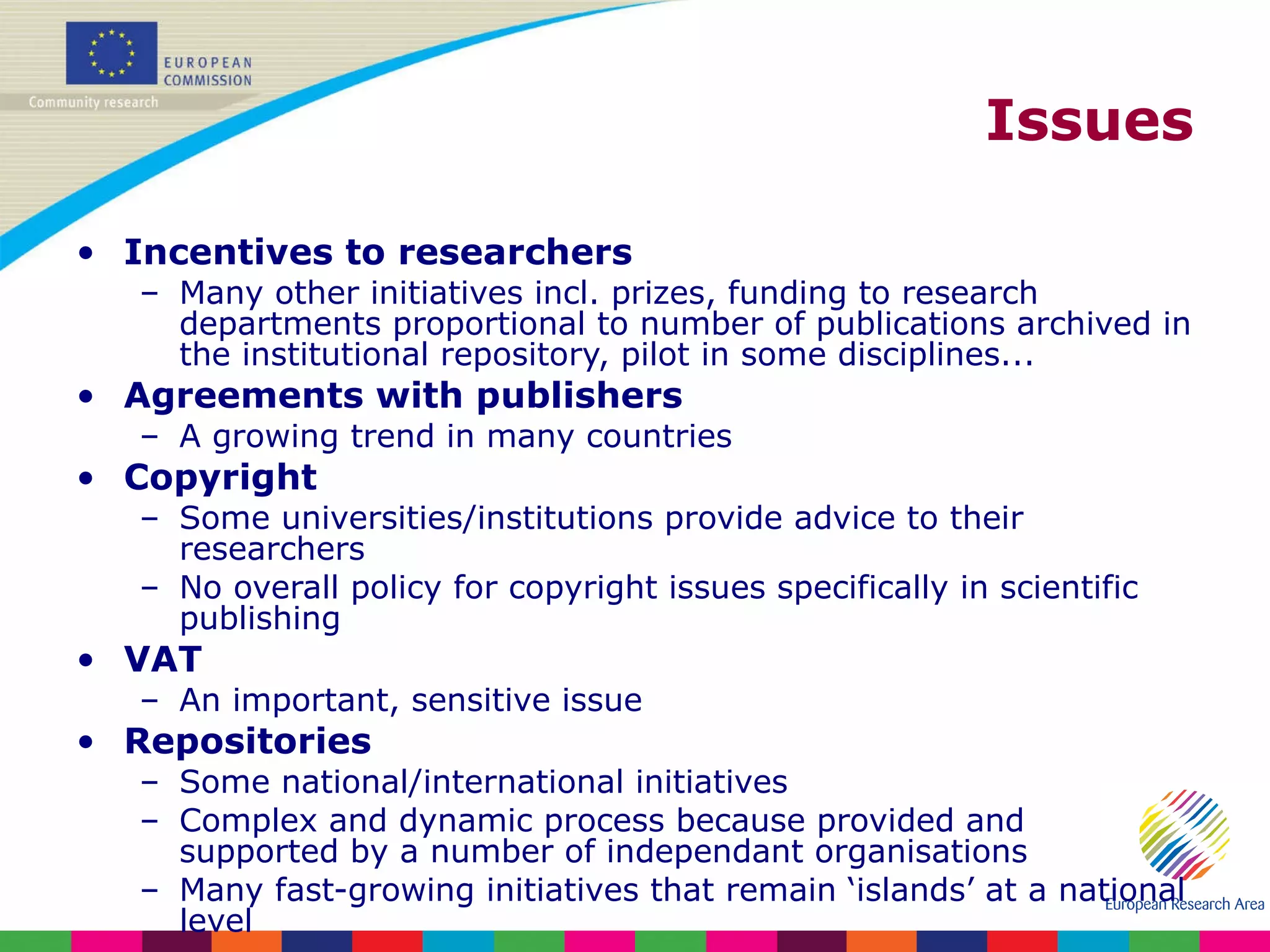
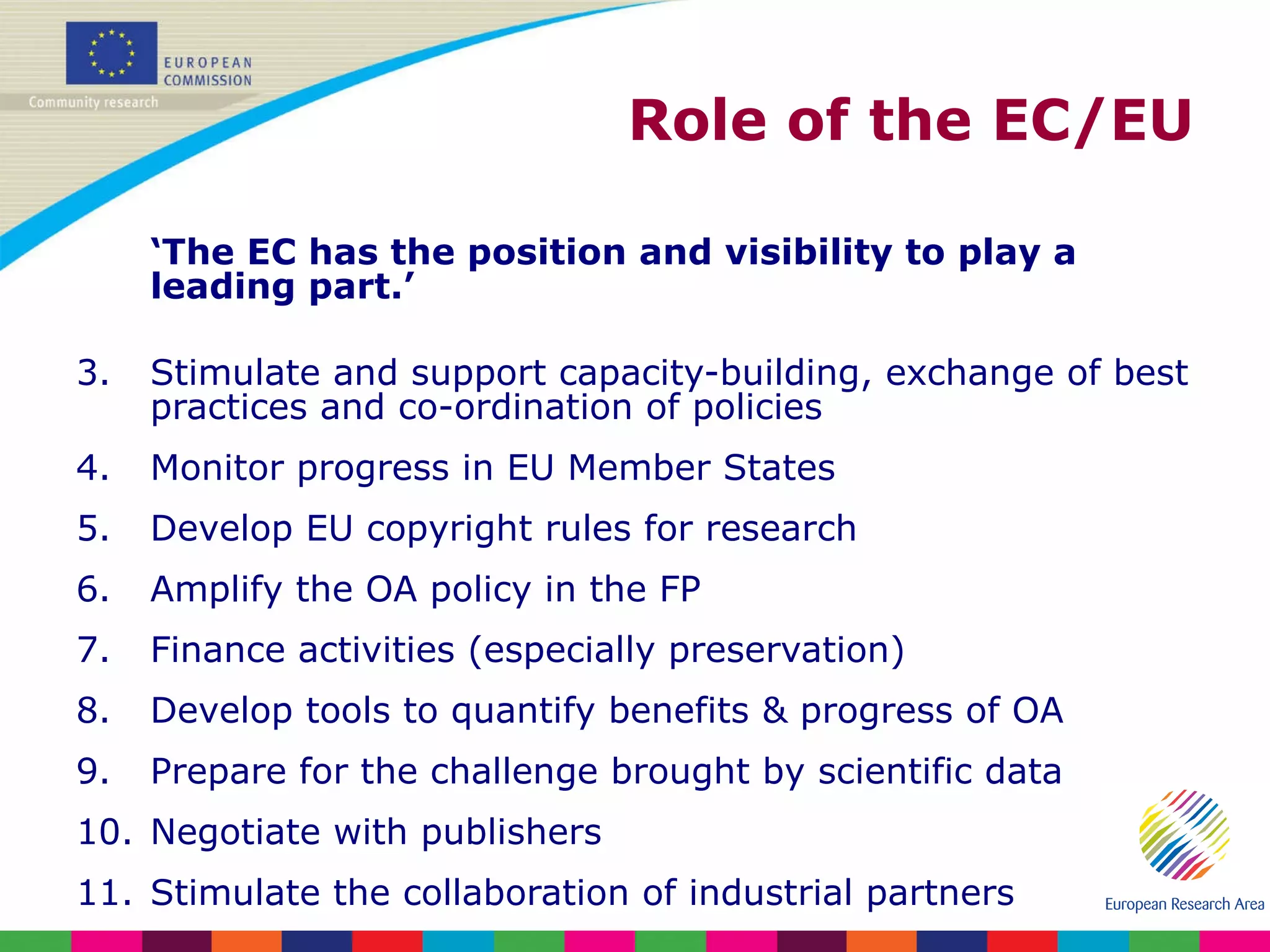
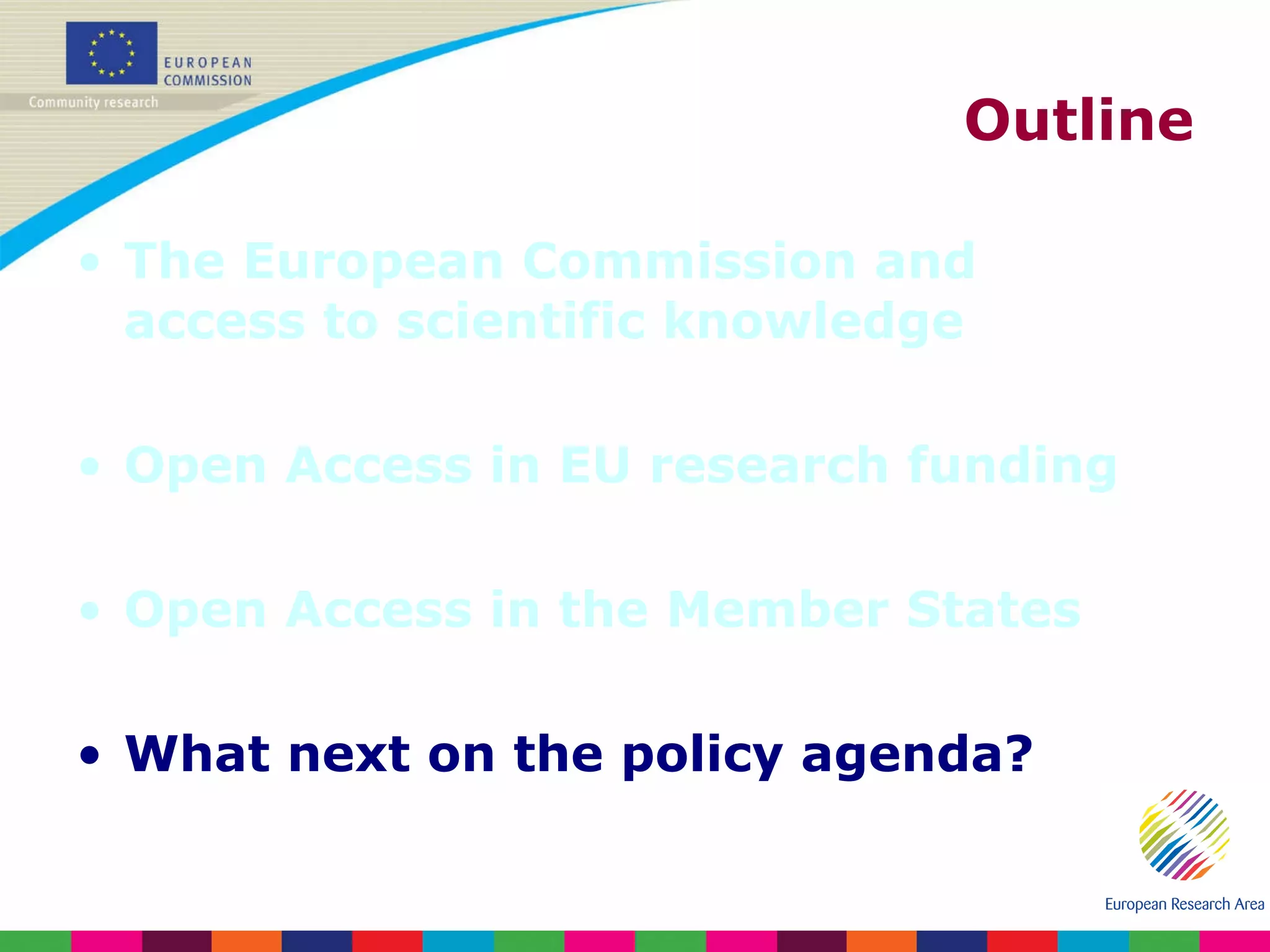
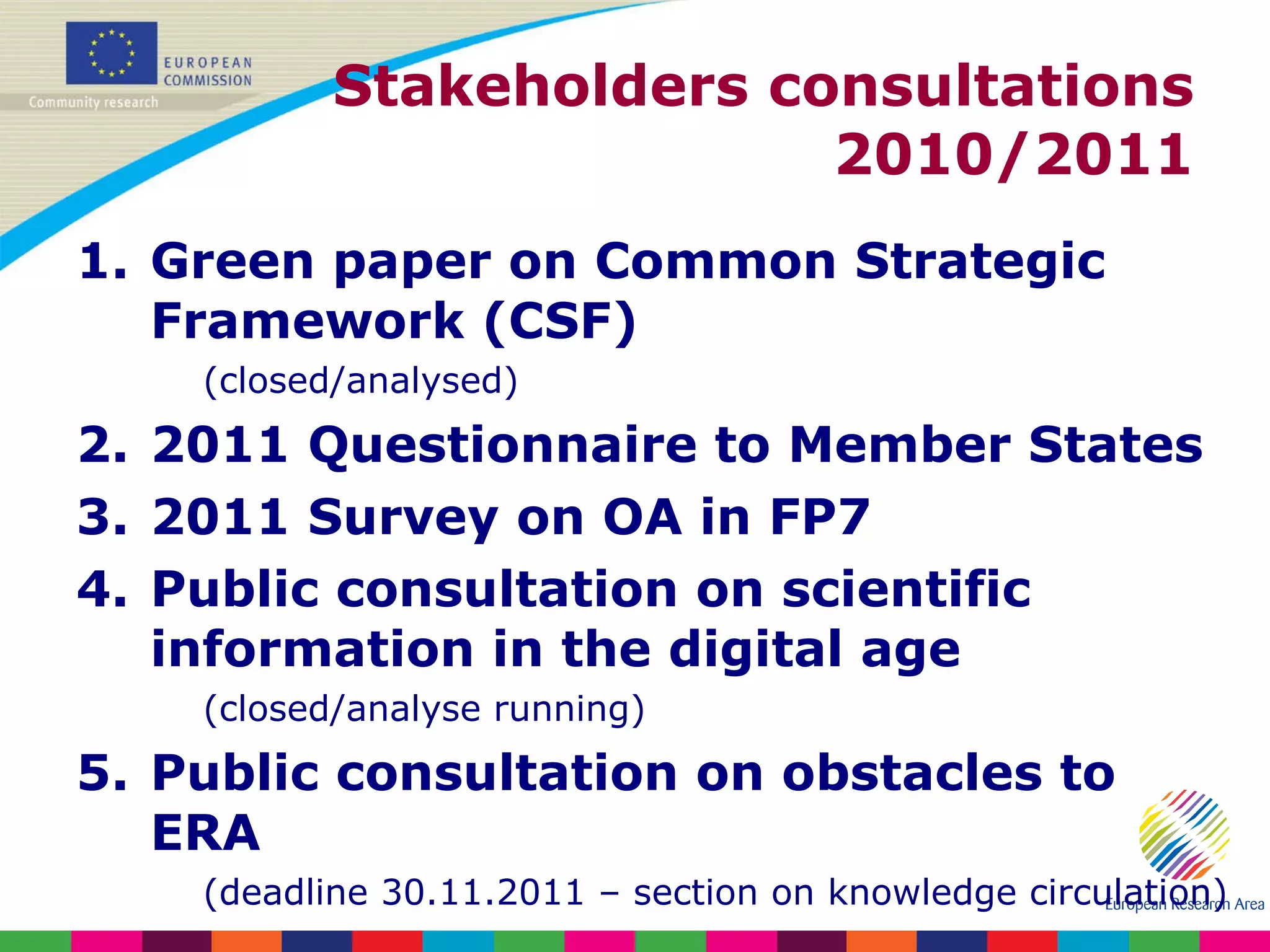
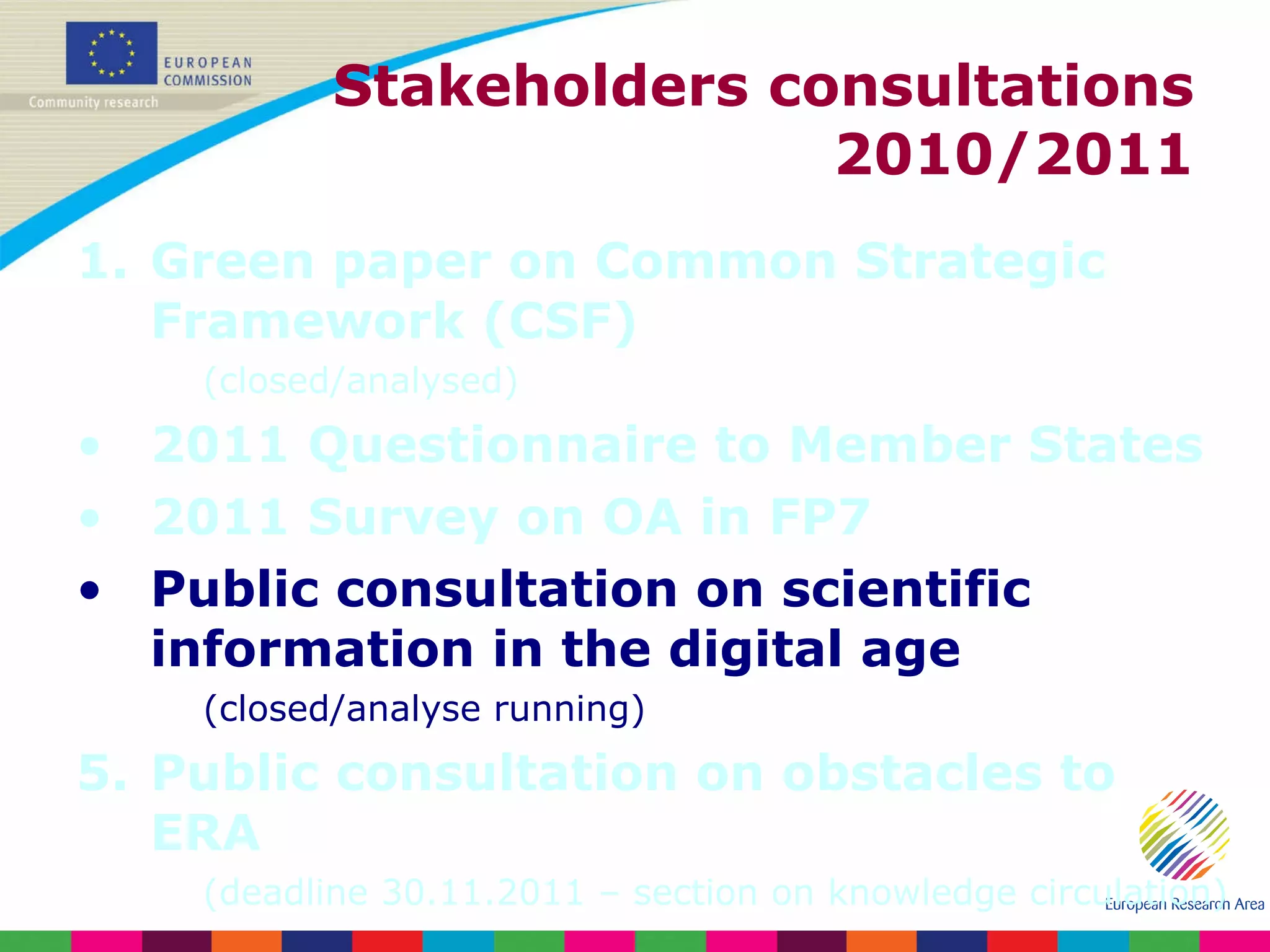
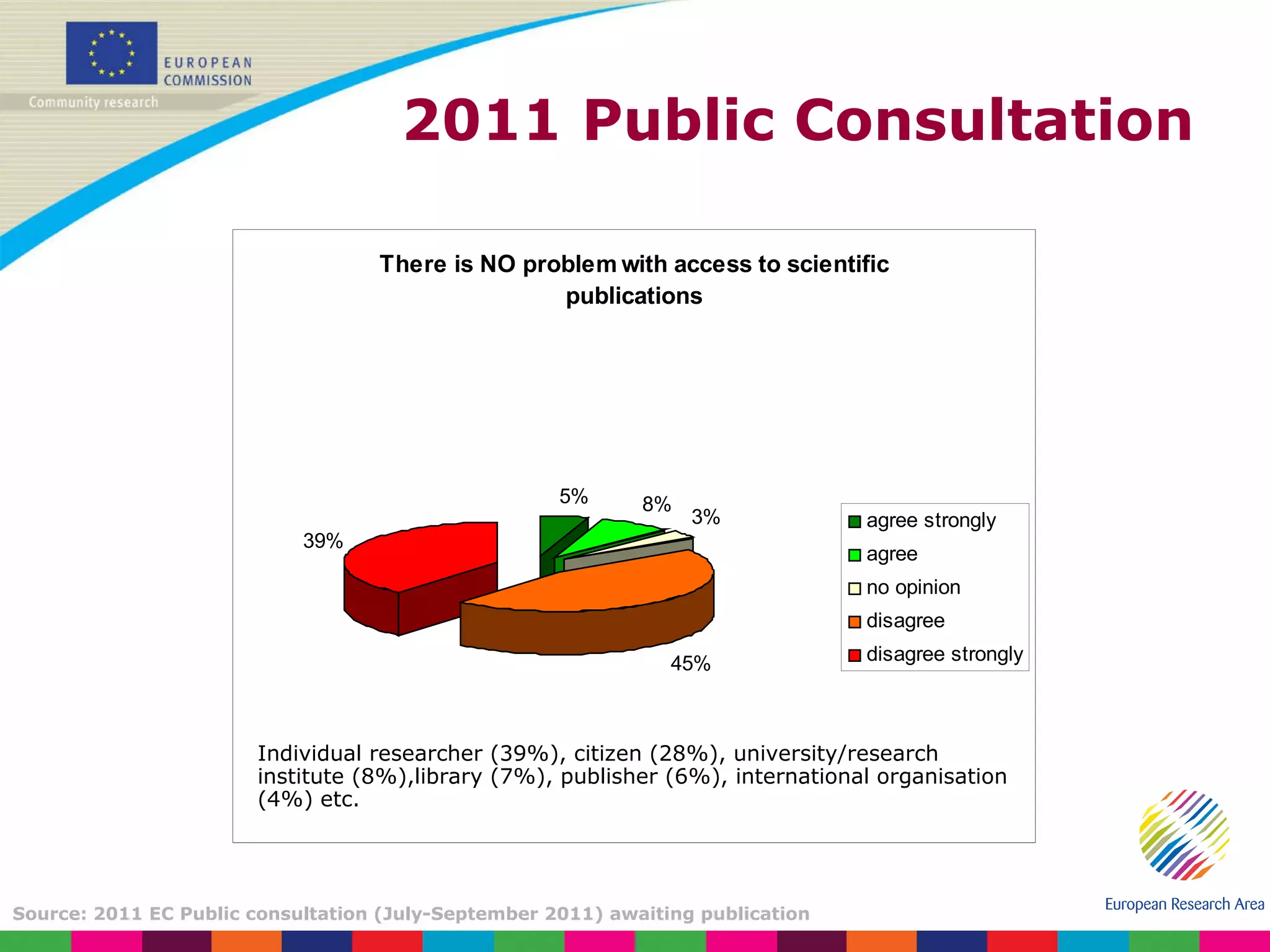
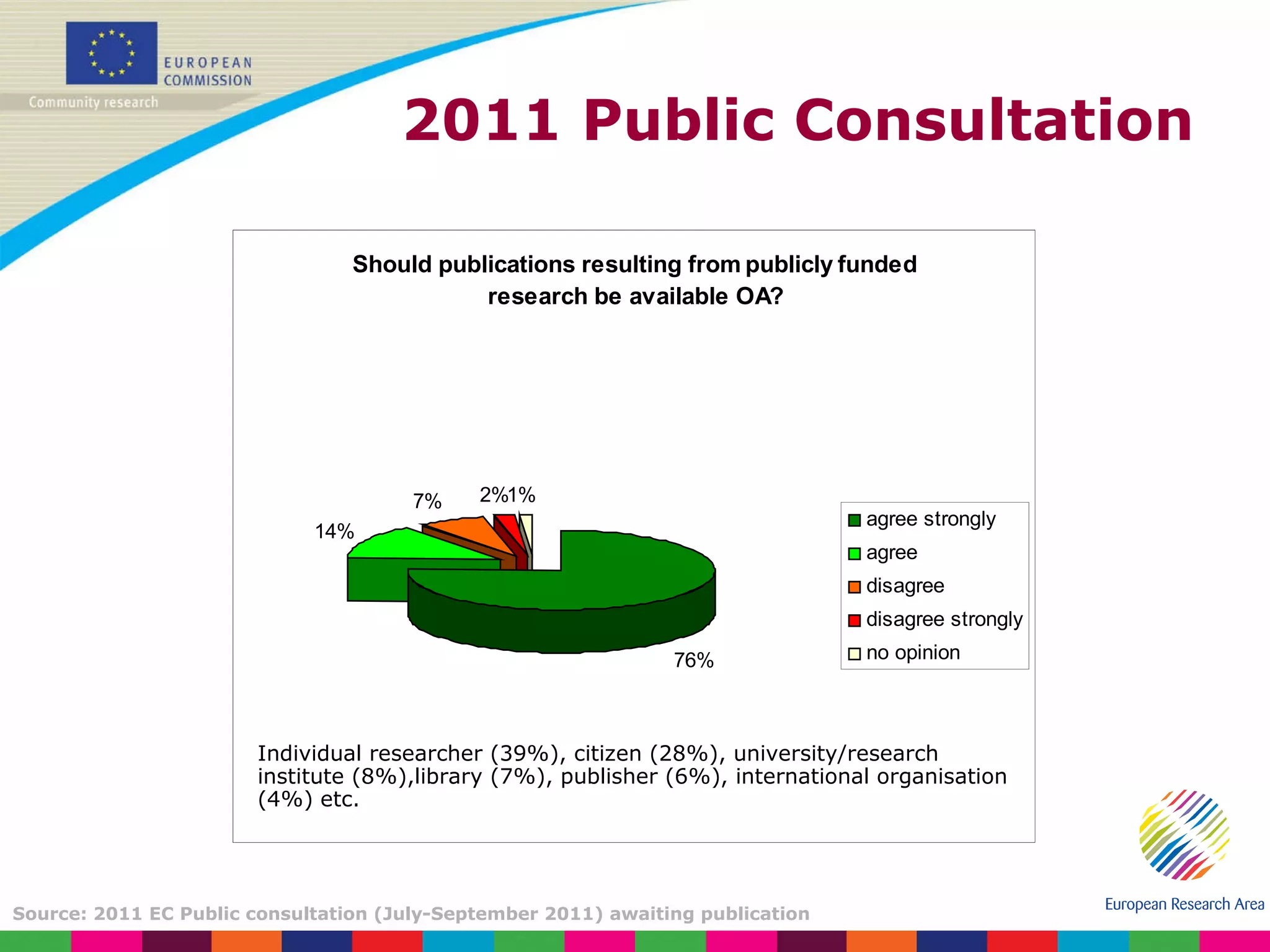
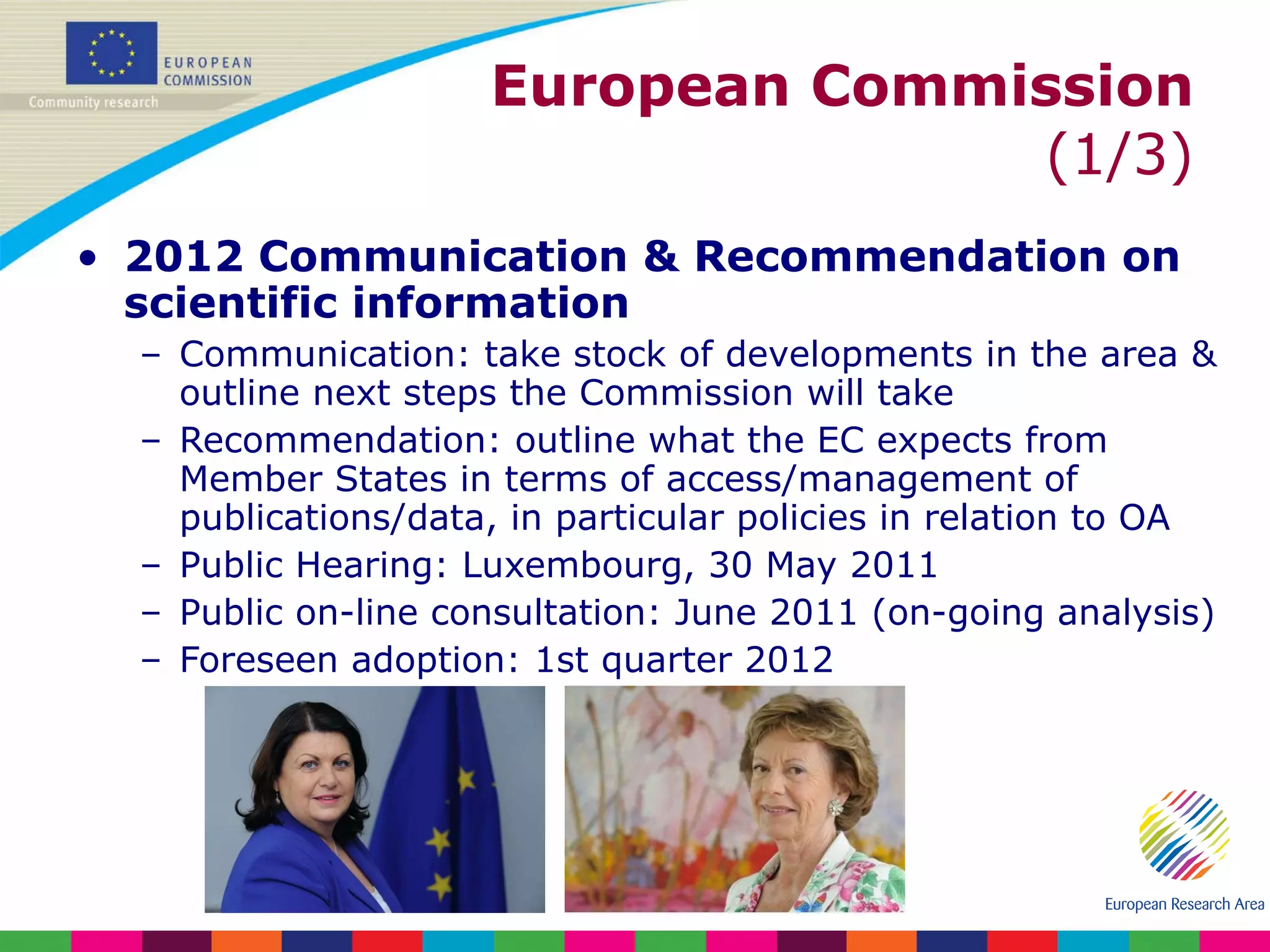
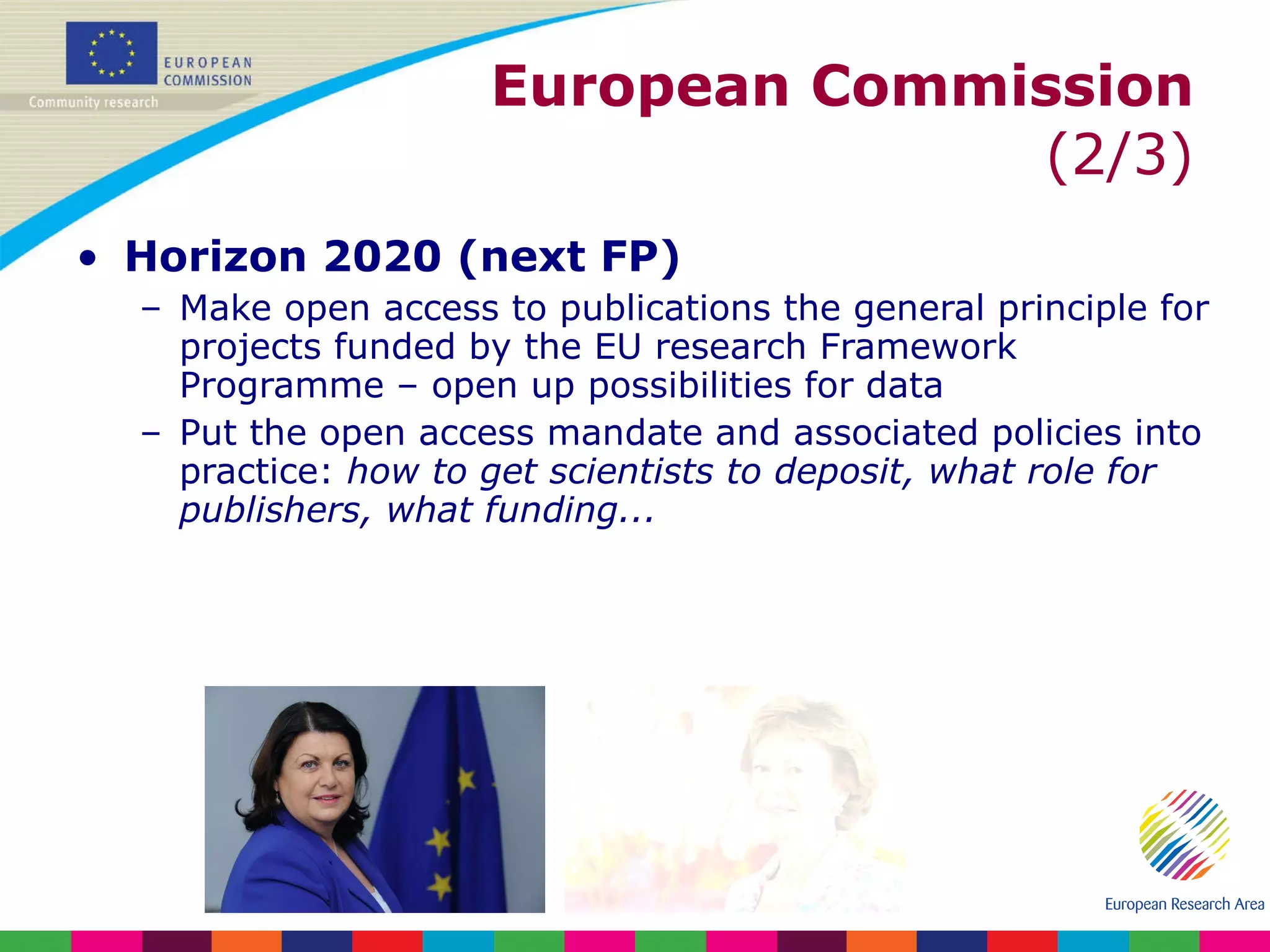

![Additional resources The EC and open access http://ec.europa.eu/research/science-society/open_access Open access on CORDIS http://cordis.europa.eu/fp7/find-doc_en.html Twitter @OpenAccessEC jean- [email_address]](https://image.slidesharecdn.com/2011-10-12-oainczjfdrev-111104044912-phpapp02/75/Open-Access-in-the-ERA-and-FP7-42-2048.jpg)